Dell's revamped XPS lineup redefines style and power with AI integration. From the sleek design to enhanced performance, it's a game-changer.
The post Dell’s New XPS: AI-Powered Laptops Redefining Tech Trends first appeared on Trendy Gadget.
Dell's revamped XPS lineup redefines style and power with AI integration. From the sleek design to enhanced performance, it's a game-changer.
The post Dell’s New XPS: AI-Powered Laptops Redefining Tech Trends first appeared on Trendy Gadget.
Dell's UltraSharp 40: A visual feast with 5K brilliance! ? Say goodbye to eye fatigue – it's the monitor dreams are made of!
The post Dell’s Eye-Friendly 5K Marvel: CES 2024 Unveil! first appeared on Trendy Gadget.
For decades now we’ve become accustomed to tossing all sorts of things into the recycling bin, like glass bottles, aluminum cans and cardboard. One category, however, that still isn’t on everyone’s list is consumer electronics. Over a billion phones were purchased in 2022, and that’s just one type of gadget. All that electronic waste can have real consequences for the planet, so it’s something you should have on your mind next time you clean out that closet.
Sure, you can try parting with your stuff for cash, but it can be tough, if not impossible, to find someone who wants a 12-year-old printer or a busted CRT. Few places have curbside pickup — in fact, some localities make it illegal to leave electronics for the garbage collectors — so you're going to have to find a reputable center to take it. We've gathered some resources to help you dispense of your broken and unwanted computers, televisions and any other gadget flotsam that's taking up space.
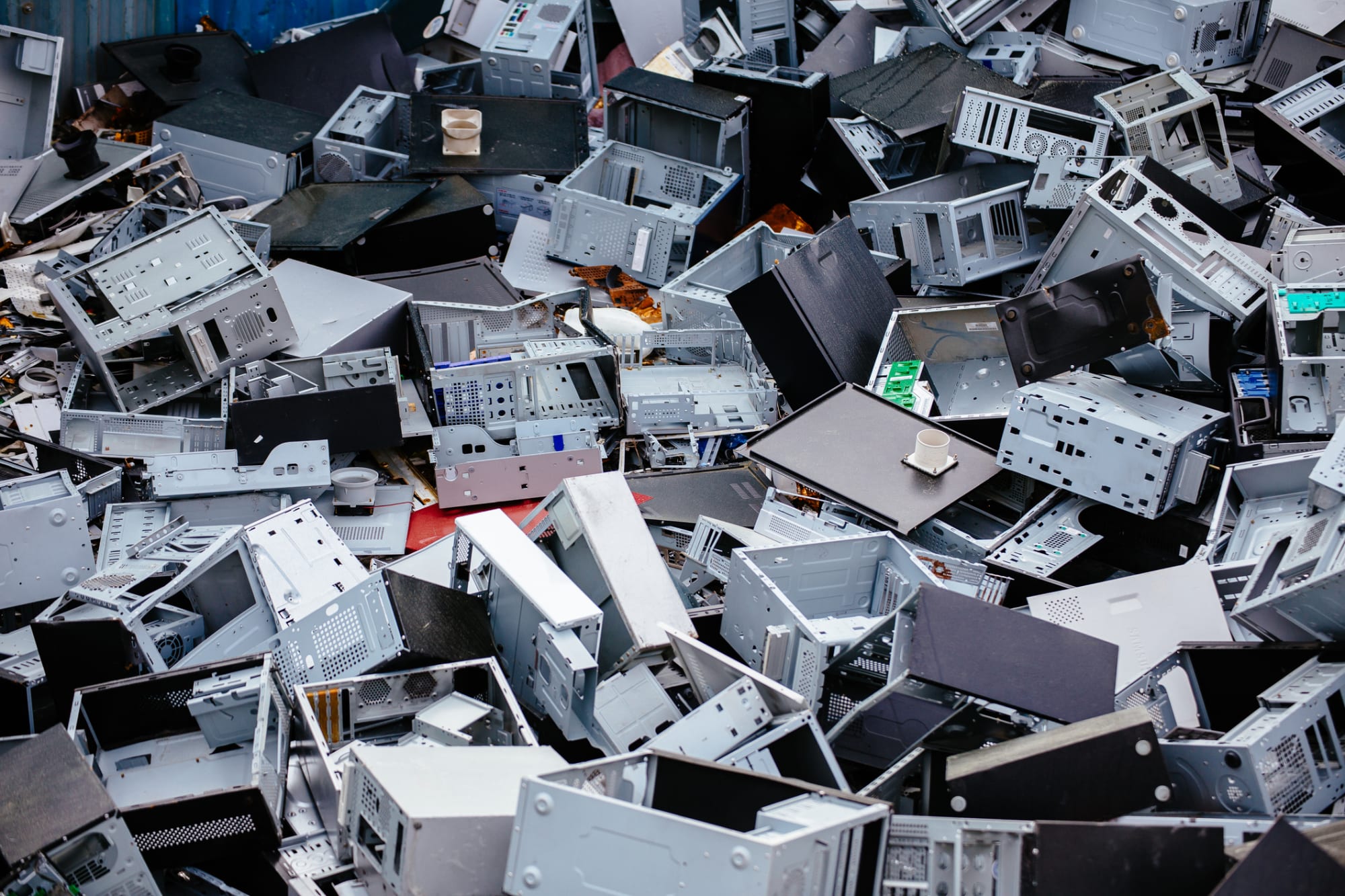
There is no national electronics recycling law at this time, so you won't find any federal programs to assist you with getting rid of old devices. The USPS does run a program for federal agencies and their employees, but it's not available to the general public. Instead, the rest of us have to rely on nationwide retailers to toss out our old stuff.
Best Buy has more than 1,000 locations in the United States, so it's likely you have one nearby where you can drop stuff off. You just need to take it to the customer service counter. They'll issue you a receipt too, but keep in mind that you can't claim the drop-off as a deduction on your taxes because Best Buy isn't a charity.
You can even recycle televisions and monitors, though you'll be charged a fee of $30 per item to cover the higher costs of transporting and disassembling them. (Consumers in California are not charged the $30 fee, while locations in Connecticut and Pennsylvania will not accept televisions or monitors at all.) If you're turning in a printer, you’ll get up to a $50 voucher toward the purchase of a new HP or Epson printer (select models only).
Also be aware that Best Buy limits you to three items per household per day, including up to two televisions.
Recycling your stuff at Staples is similar to Best Buy — just bring your products to the customer-service counter. But it’s more limited in that you can only bring in seven items a day, and the store won’t accept televisions at all (monitors are allowed). Staples Rewards members also receive a small credit of $5 per month for bringing in goods to be recycled or shredded. Members who spend at least $50 on ink or toner within a 180 day period can also receive $2 for every used ink cartridge they turn in, up to 20 a month.
Office Depot has more than 1,300 locations, but unlike Staples and Best Buy, it won't recycle your old gadgets for free. If you're only getting rid of a few phones or batteries, those can be turned in at no charge. For everything else, you must purchase a Tech Recycling Box, which costs $8.39, $18.29 or $28 depending on the size. Once you have the box, you can fill it with as many items as you want, provided they all fit inside, including smaller televisions. So it's a great deal if you have a lot of stuff you want to dispose of. These can be turned in either in person or by mail.
You can also return used ink and toner cartridges and get $2 each, up to 10 a month, if you’re a rewards member and spend at least $10 in-store on products within the same month.
You can dispose of old rechargeable batteries, old phones and CFL bulbs in the dropoff boxes at any of 2,300 Home Depot or 2,200 Lowe’s locations. The bins are usually located in the front of the store, and Home Depot has an 11-pound limit on individual items.
Target locations have drop-off bins for recyclables located near the entrance; in addition to bins for paper and plastics, there is a specially-designated bin for e-waste like cellphones and used ink cartridges
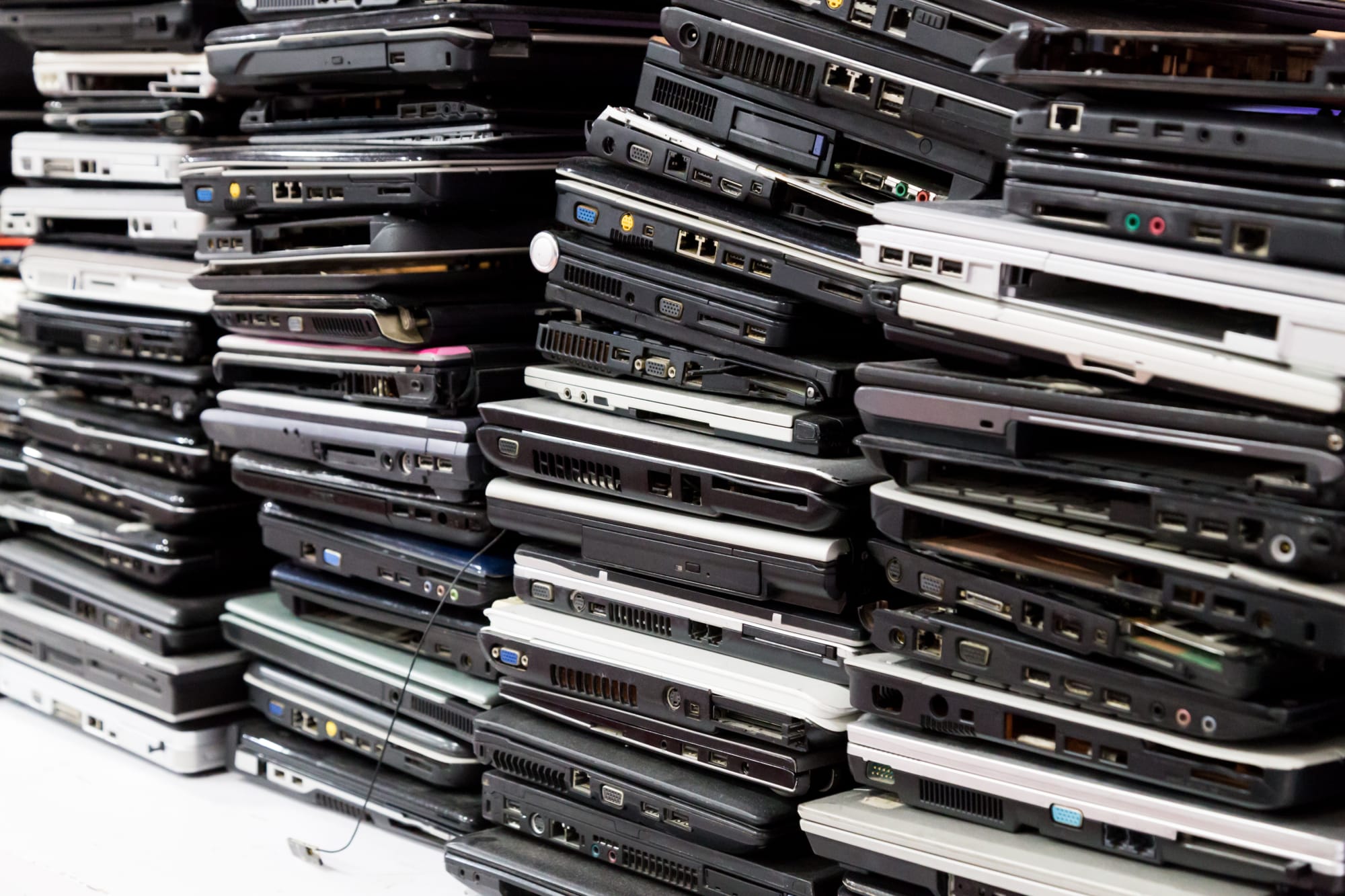
If you can't make it to a retail location, especially when you need to get rid of only one or two items, many companies offer recycling programs for their own products. They'll even pay for shipping. Some run their own programs while others use outside organizations. We've outlined policies from a handful of manufacturers below.
While Amazon would love to direct you to its trade-in program, you're probably reading this post because there's stuff you can't sell, and for those items Amazon offers mail-in recycling. You can send in your busted Kindles, Fire TVs and even Dash Buttons, as well as select peripherals like keyboards and mice. You'll just need to fill out some forms online and generate a shipping label, which you can slap on any box. Drop it off at a UPS location, and you're good to go; Amazon will cover all the costs.
If your iPhone or MacBook is still in good shape, you should consider selling it, but if it's too old or beat up you can still score a gift card by turning it into Apple's recycling program. For iPhones (as well as select handsets from Samsung and Google), iPad and Apple Watches you'll be asked to fill out a form attesting to the product's condition and given a trade-in quote, with a working iPhone 7 going for $30 and an iPhone 11 scoring you $160. For Macs, you'll be asked to provide a serial number as well. Though Apple won't give you cash for anything it deems old or unacceptable, you can still mail it in or bring it to any Apple Store so it can be responsibly disposed of.
Dell offers drop-off recycling via a partnership with Goodwill. Not every location participates, but there are more than 2,600 that do. And, because it's a charity, you may even be able to deduct it as a donation on your taxes. Dell also has a mail-back program on its site where you can generate a shipping label and drop the package off at a FedEx location instead.
You can ship old products back to Epson by simply creating a shipping label on its site and dropping it off at a FedEx location. Or just drop it off at a Best Buy location for a $30 or $50 voucher toward a new Epson printer.
If you can, HP recommends taking its products to the nearest Best Buy. Ink and toner cartridges can be returned by mail; the company will mail you an envelope that can hold between 3 and 8 ink cartridges and can be dropped off in a mailbox or at the post office. For toner and large quantities of ink cartridges, you can print out a label and use your own box, or request a box be sent directly to you, which you’ll fill with items and drop off at a UPS location.
Many other companies use outside recyclers to dispose of their products, and you'll often see the same names popping up again and again across different manufacturers. This should simplify things in some cases — you should be able to send in products from multiple sources in one package. You just need to fill in the make and model to generate a prepaid shipping label. However, different states have different rules on what you can return, so the drop-downs for selecting your product may vary by area.
Two major recycling companies you'll notice a lot are RLG, which covers Acer, Canon, Google, Intel, Lenovo, Microsoft and Motorola, and MRM, which recycles products for Alcatel, BlackBerry, Barnes & Noble (nook), TCL and Toshiba.
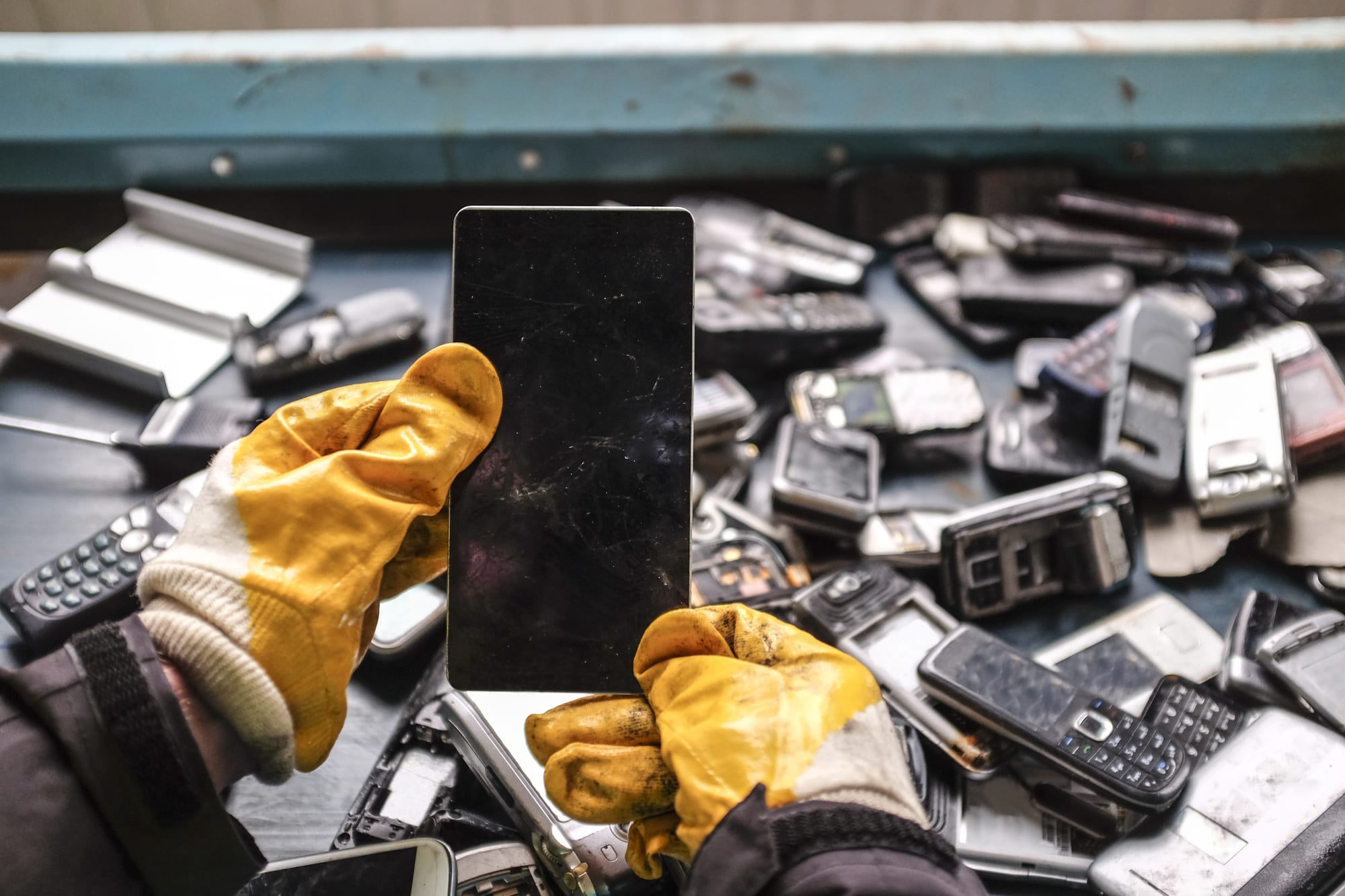
Cell phones are the easiest gadget to recycle — if you haven't already decided to sell yours off on eBay or via sites like Decluttr and ecoATM. But, if you can't or won't make some cash off of it, you can send it to:
Call2Recycle, which has drop-off centers all over the country in many chain stores, including Lowes and Home Depot. It will also accept rechargeable batteries.
Cell Phones for Soldiers accepts phones in any condition and sells them to refurbishers or recyclers. The proceeds go toward purchasing phone cards for troops so they can call their friends and family back home. To be clear, the phones are not given directly to the soldiers.
The four major US carriers — Verizon, AT&T, T-Mobile and Sprint — all offer free recycling. You can trade in your old device in-store or send it in for a credit toward a new phone, or let them straight up recycle it. AT&T also participates in Cell Phones for Soldiers.
If you do decide to try your luck with ecoATM to see if your old phone is still worth a few bucks and it turns out it's worth nothing, you can at least rest easy knowing that the company will also recycle your phone responsibly.
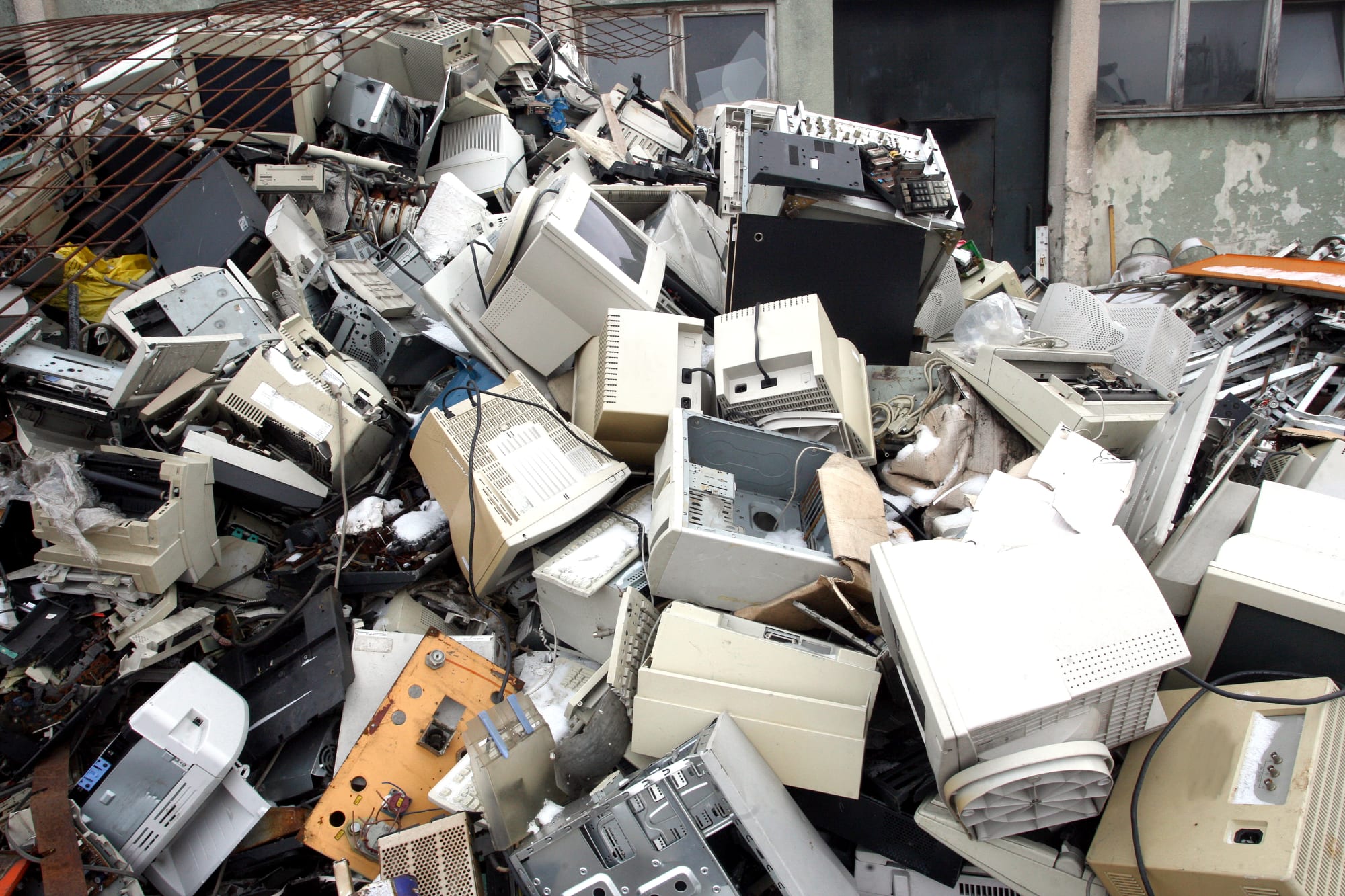
There may not be a national law dictating that you must recycle your electronics, but at least 26 states have passed rules that vary widely on what they demand of manufacturers and consumers. Almost all states that do collect products for recycling provide this service free, with the bill footed by the companies in some way. Most provide some local programs to help you get rid of your stuff, regardless of whether recycling your gadgets is required or optional.
States where you can no longer dispose of electronics in the regular trash and must recycle them include: California, Connecticut, Illinois, Indiana, Maine, Minnesota, New Jersey, New York, North Carolina, Oregon, Pennsylvania, Rhode Island, South Carolina, Vermont, West Virginia, Wisconsin and the District of Columbia.
The following states have laws requiring manufacturers to pay for recycling, but you, the consumer, are not actually required to recycle your electronics: Hawaii, Maryland, Michigan, Missouri, Oklahoma, Texas, Utah, Virginia, and Washington.
The following states have some special circumstances worth noting:
Connecticut: Does not allow recycling centers to charge you a fee for turning in electronics, so many organizations and retailers that would usually charge for recycling televisions and monitors do not accept them. Because you cannot dispose of them curbside, you can take them to a municipal transfer station for free.
New York: If you live in a New York City apartment building with 10 or more units, contact your landlord about getting an ecycleNYC drop-off box installed in your building. It’s super convenient and free.
Pennsylvania: Does not allow retailers to charge you a fee to recycle, so places like Best Buy and Staples will not accept televisions or monitors. Many recycling centers have also closed as a result of underfunding, so check the list of open locations first. Some nonprofit recyclers may still accept the items, and you should check to see if your local government is hosting any drop-off events. Lancaster and Dauphin Counties also still run civic recycling programs.
Virginia: This state does not have a dedicated statewide recycling program, but some localities run their own programs including Fairfax, Loudoun and Rockbridge counties, and cities like Arlington. Check each municipality’s site for details.
This article originally appeared on Engadget at https://www.engadget.com/where-to-recycle-electronics.html?src=rssSize matters or doesn’t, depending on who you ask. While there has been a trend towards more minimal and sometimes smaller products in the past years, there are some problems that can’t be solved unless you actually go big. After a certain point, computer screens become a little less usable at smaller sizes, sometimes forcing users to squint or at least avoid using them at their maximum resolution. In contrast to the general trend, laptops seem to be getting bigger every year, or at least people have been asking for bigger screens on them. Whether that will last or not, only time will tell, but Alienware is making a leap of faith with its new gaming laptops that ditch traditional sizes in favor of larger screens to keep you better immersed in your games and content.
Designer: Alienware

Bigger isn’t always better, not unless you’re talking about screens. That seems to be the philosophy that Alienware is adopting this 2023 with the revamped line of both its X and M series of gaming laptops. For the first time since 2004, the Dell brand is embracing a 16-inch size now that it’s becoming more common among its peers and rivals. More than just the unconventional size, though, the Alienware x16 is boasted to be the company’s most luxurious yet. That’s immediately apparent in the laptop’s premium materials and finishes, LED-lit rear stadium, and, for the first time in a long while, an RGB-illuminated touchpad. It’s not all just looks, though, since the Alienware x16 is powered by the latest 13th-gen Intel Core processor and the shiny new NVIDIA GeForce RTX 4090, along with six powerful speakers to make your games and movies really come to life.
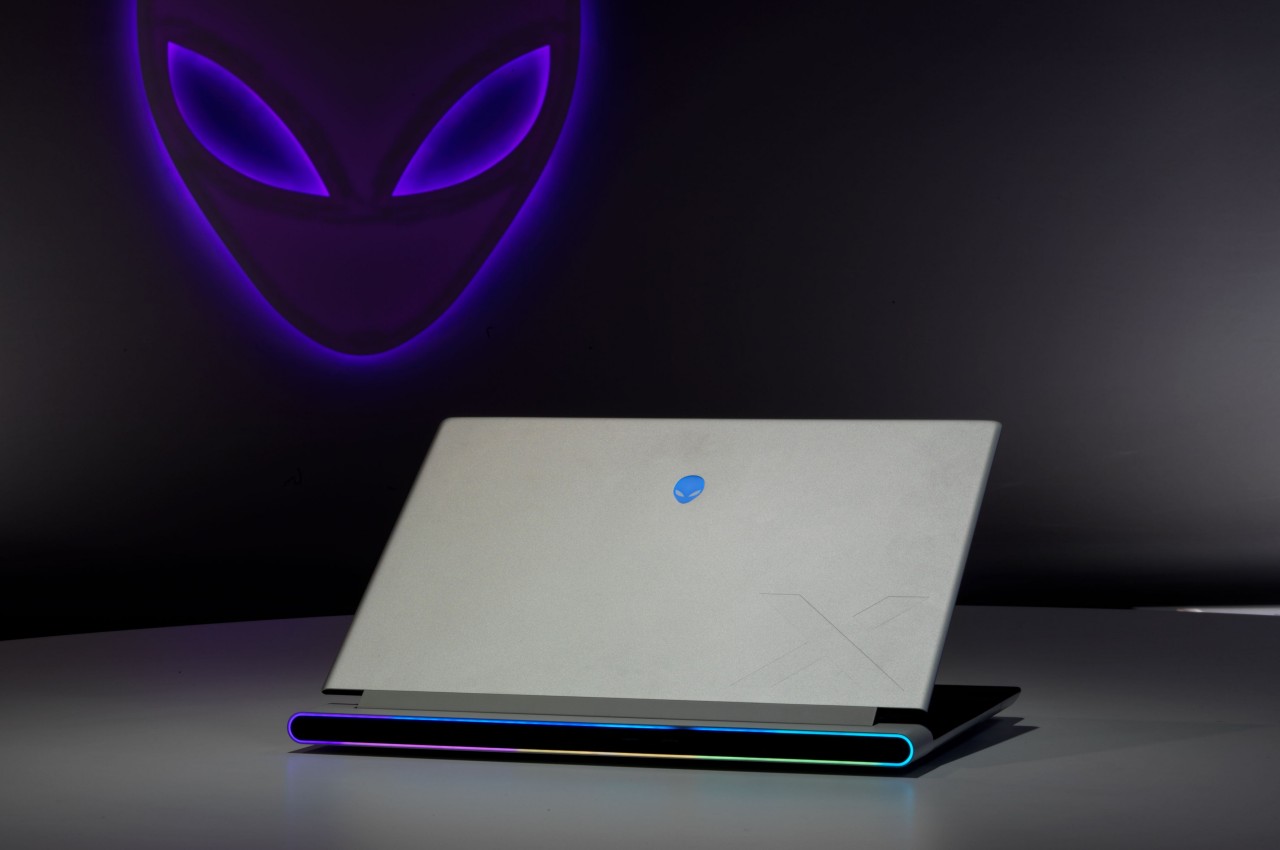
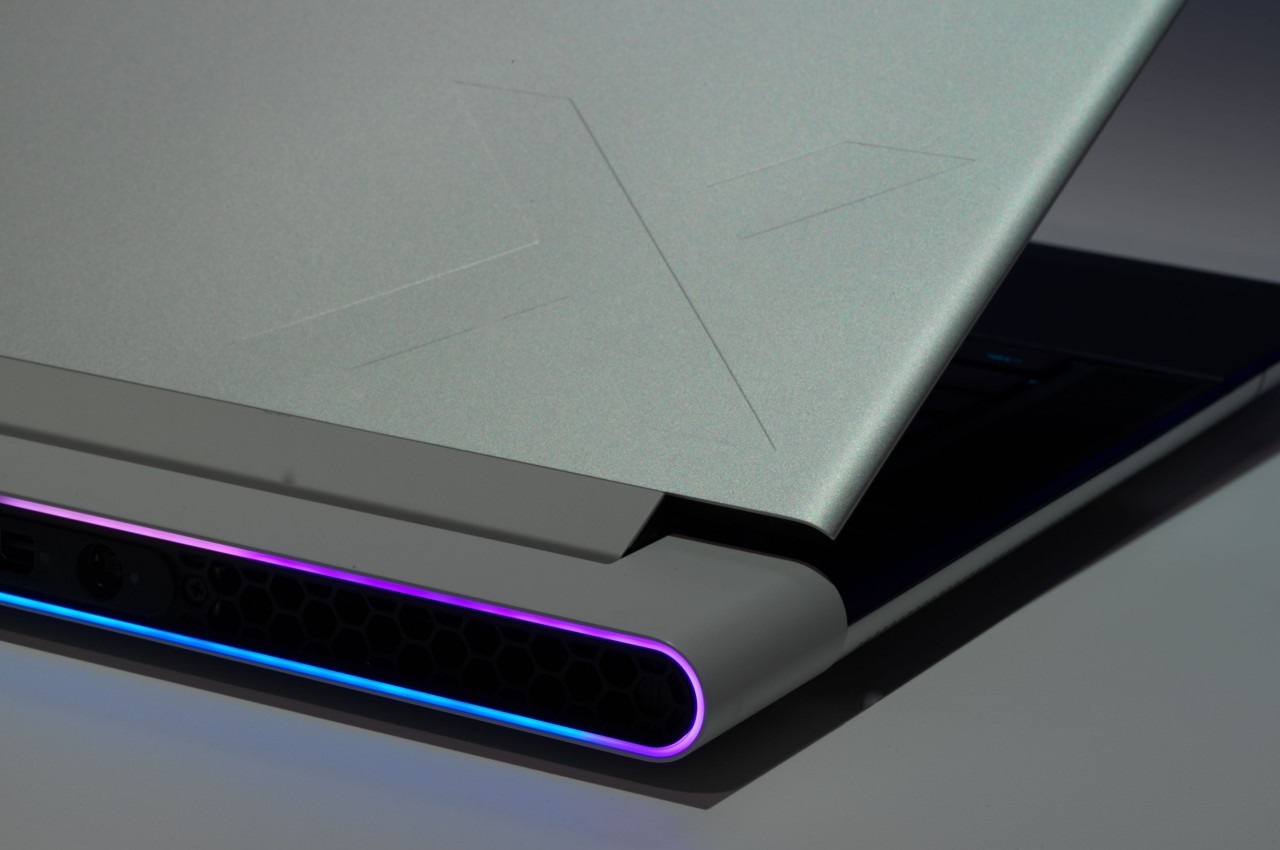
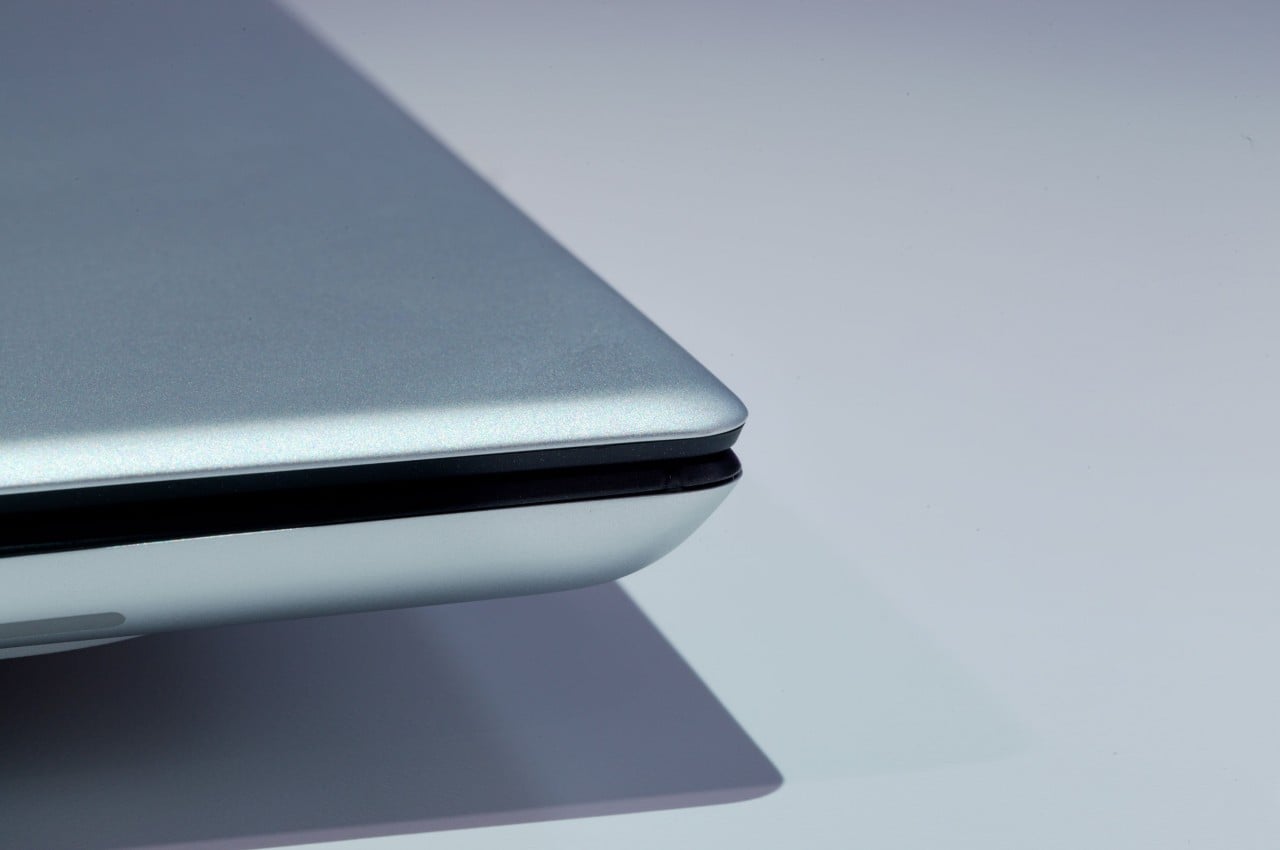
Although a tad smaller, the revamped Alienware x14 won’t be outdone. Touted as the world’s thinnest 14-inch gaming laptop, this second-gen or R2 beauty has a new display panel that gives more screen real estate and a two-fan design that keeps it cool while looking hot. Further emphasizing the thin and light image, the laptop supports charging via USB-C, allowing you to travel lightly without having to worry about its battery life.
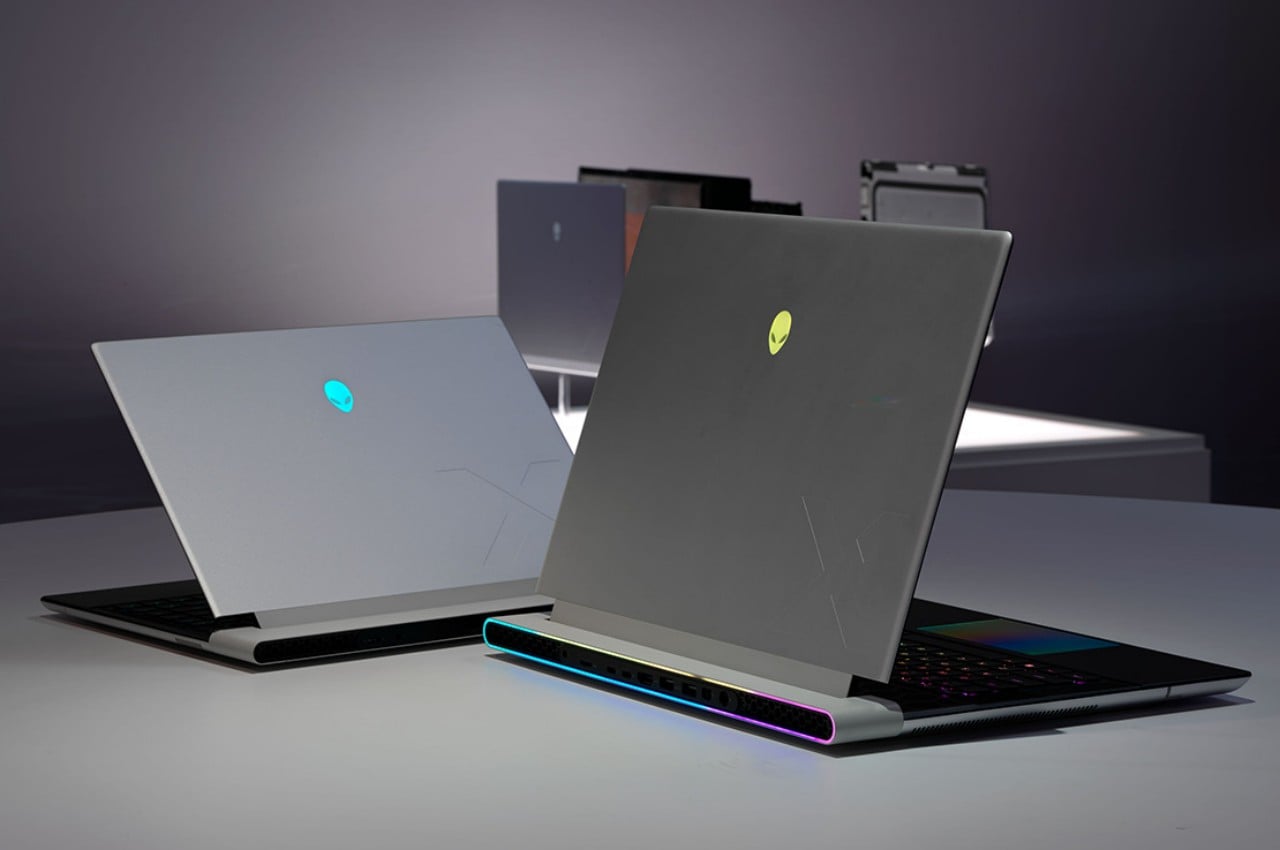
When it comes to size, however, the new Alienware m18 is undoubtedly the brand’s new king, being its largest gaming laptop to date. That bulk does come with matching muscle thanks to a beefy 13th-gen Intel Core i9-13980HX paired with NVIDIA’s top-of-the-line GeForce RTX 4090 for laptops. Unsurprisingly, there is also plenty of thermal solutions at play inside, from Element 31 thermal interface material for the processors to seven heat pipes to four fans with ultra-thin blades. With its size, there’s enough space for a full keyboard and number pad using optional mechanical CHERRY MX keys, delivering the complete desktop gaming experience in portable form.
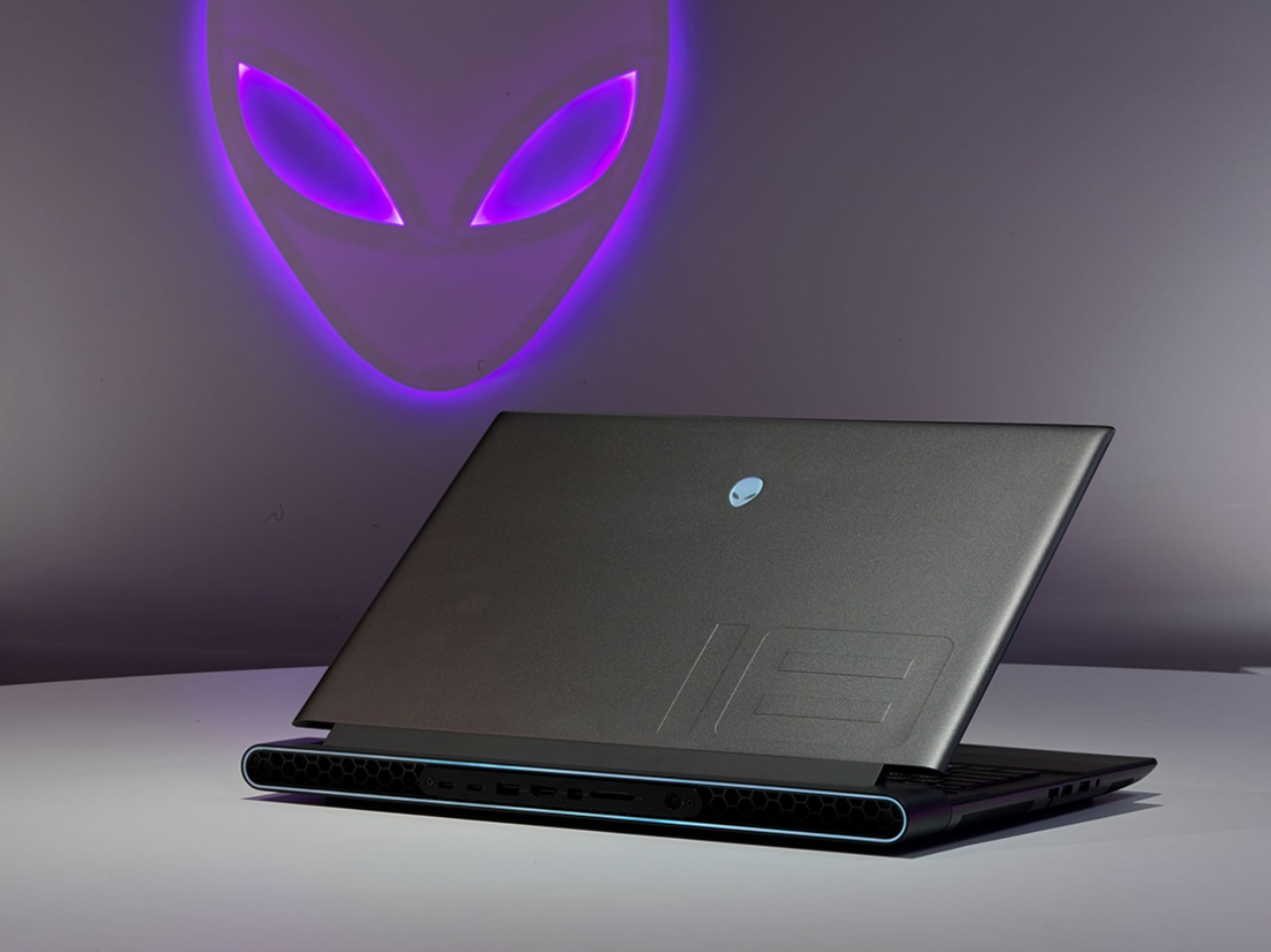
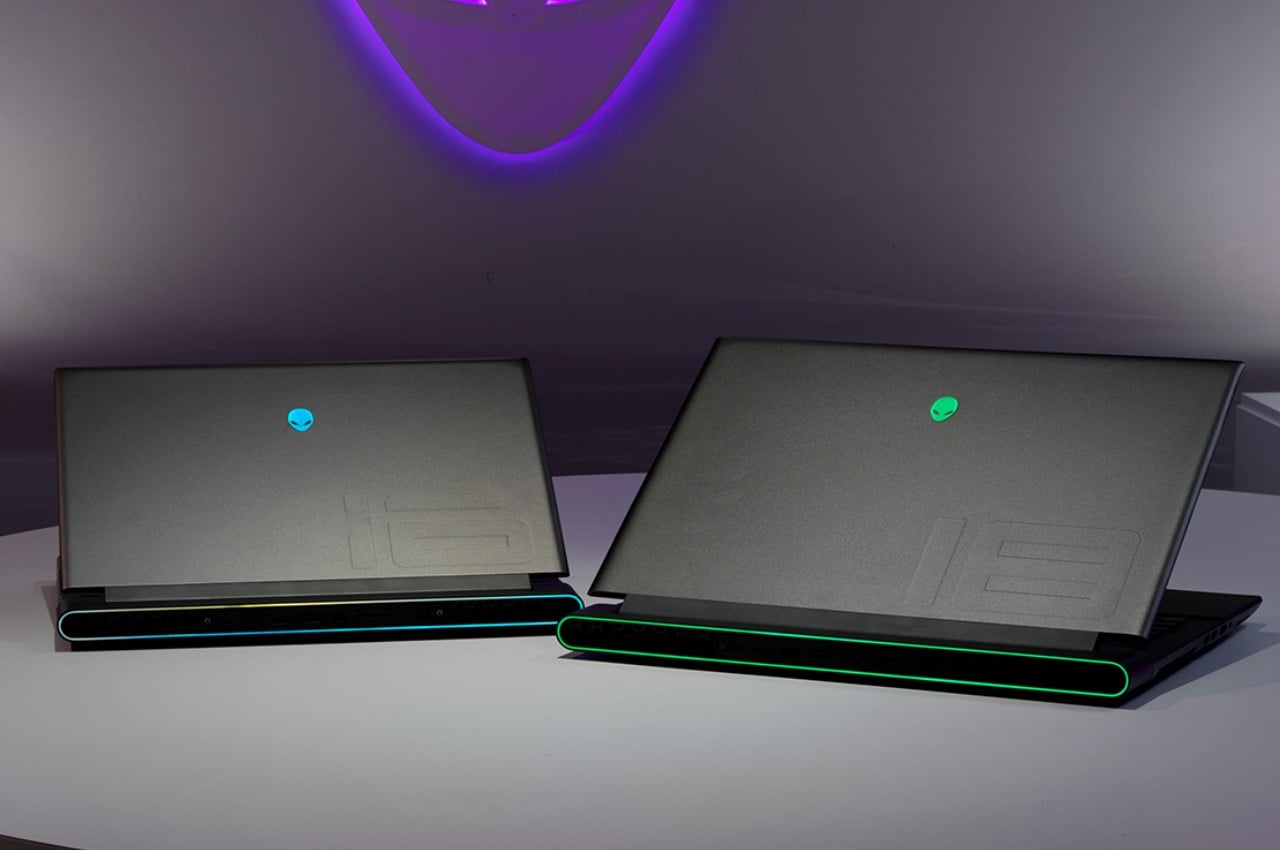
Alienware also announced the m16, a slightly smaller but equally capable version of the Alienware m18. Also joining the fray are the Alienware G15 and G16, more stylish gaming laptops with an 80s vibe and eye-catching colors that will appeal to gamers and users of all ages.
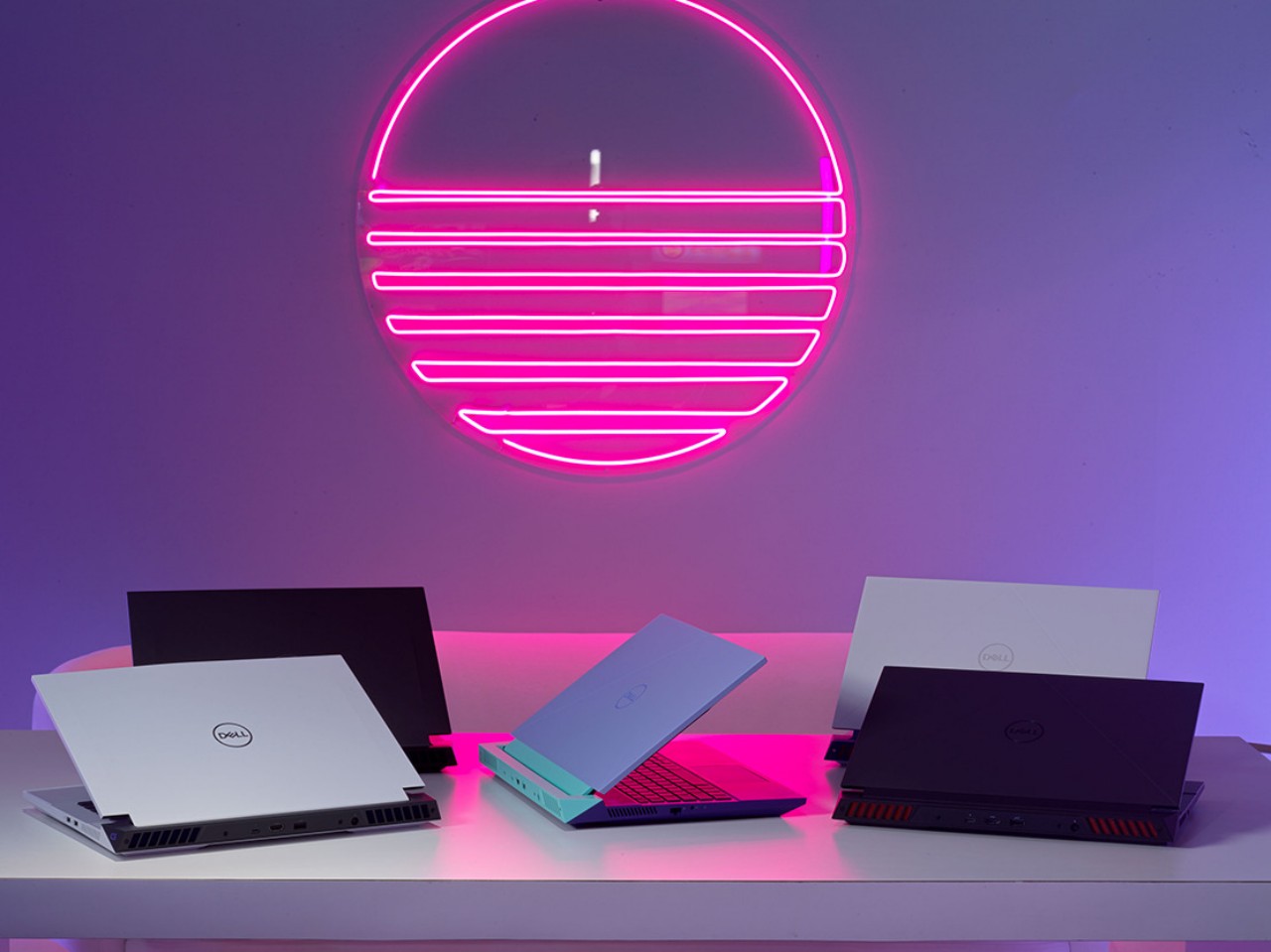
The post Alienware gaming laptops get supersized at CES 2023 first appeared on Yanko Design.
We’ve kicked off 2024 with a slew of new processors from Intel, NVIDIA and AMD, which means there should be plenty of refreshed laptops on the horizon. This year, the term you’ll probably hear the most is AI PCs, that is, computers with neural processors designed to speed up AI tasks. While it’s not necessary for you to buy a laptop just for the sake of AI this year, it’s a good thing to keep an eye on for future-proofing as more companies bring the likes of Microsoft’s Copilot or ChatGPT to their systems. Some notebooks even have dedicated Copilot buttons on the keyboard to make it easier to summon generative AI help.
Even if you’re willing to wait out the AI hype while you shop for your new laptop, there are still plenty of other specs to consider. Should you pay extra for more memory, or get a notebook with a larger screen? We've tested and reviewed dozens of the latest laptops, including Apple's latest M3 MacBook Air, to come up with top picks for the best laptops you can buy right now, along with buying advice that will hopefully help demystify the market.
You probably have an idea of your budget, but just so you know, most modern laptops with top-of-the-line specs cost between $1,800 to $2,000 these days. That doesn’t mean you won’t find a good system for under $1,000 — a grand is the base price for a lot of premium 13-inch ultraportables, with chips like Intel’s Core i3 or i5 series. And if that’s too expensive, you’ll still have respectable options in the $600 to $800 range, but they might come with older, slower processors and dimmer screens. You could also consider configurations with AMD’s processors, which have become more reliable and speedy in recent years, while sometimes costing less. I’ve included our favorite budget-friendly model in this best laptop buying guide but we have a list of more-affordable laptop picks that you can check out as well.
After working out how much money you want to spend, your next decision is what operating system to choose. As expected, that’s slightly easier for people who prefer an Apple MacBook. Now that the company has brought its M-series chips to the whole lineup, with the Pro models sporting the third generation of those processors — your only real considerations are budget, screen size and how much power you need.
Over on Team Windows, however, the shift to ARM-based chips hasn’t been as smooth and it’s quite unlikely you’ll be considering one in 2024. Though Apple laptops have been able to bring huge increases in battery life while maintaining (and in some cases improving) performance with their own silicon, PC makers have been limited by Windows’ shortcomings. For now, it’s still safer to stick with an Intel or AMD processor.
As for whether you want a PC with a dedicated AI button on the keyboard, that depends on how often you see yourself using Microsoft’s CoPilot generative tools. Given we’re only just seeing the first slate of AI PCs, it would be wiser to wait out the hype and see what improvements might come over time.
Finally, if you don’t really need your laptop for a lot of complicated tasks and mostly want it for Netflix, shopping and Google Docs, it’s worth remembering there’s a third and fairly popular laptop operating system: Chrome OS. If you do most of your work in a browser, then a Chromebook might be good enough, and they’re usually more affordable, too.
It’s worth pointing out that some recent models have done away with headphone jacks. While this doesn’t seem to be a prevalent trend yet, it’s a good reminder to check that a machine has all the connectors you need (otherwise, you'll have to spend more money on the necessary adapters). Most laptops in 2024 offer WiFi 6 or 6E and Bluetooth 5.0 or later, which should mean faster and more stable connections if you have compatible routers and devices. While 5G coverage is more widespread now, whether you need support for that depends on how much you travel and your need for constant connectivity sans-Wi-Fi.
Where you plan on taking your laptop also helps in deciding what size to get. Many companies launched new 14-inch machines in the last year, straddling the line between ultraportable and bulkier 15-inch laptops. For most people, a 14-inch screen is a great middle ground. But if you’re worried about weight and want a more portable laptop, a 12- or 13-inch model will be better. Those that want more powerful processors and larger displays will prefer 15- or 16-inch versions.
See Also:
This Apple laptop is just a larger version of the 13-inch M3 MacBook Air. It's still quite portable at 3.3 pounds, and some will appreciating having just a tad more screen real estate all the time. Configuration options are the same as well; you can spec out the 15-inch Air with up to 24GB of RAM and 2TB of storage. But considering it starts off $200 more than the smaller model, it's primarily best for those who absolutely need a larger screen and are willing to pay for it.
Battery life will vary depending on the type of laptop you have and what you use it for. Gaming laptops have some of the shorter average battery lives in the notebook space because playing laborious titles causes battery to drain faster. You can expect between five and eight hours of life on a single charge with most gaming laptops, but don't be surprised if you actually get less use per charge if you're doing heavy things with it. As for regular laptops, you can expect roughly ten hours of life on the best models, but some will fall on the lower and higher ends of the spectrum.
There is no one-size-fits-all solution when it comes to laptop storage. Most of the best laptops will have configurations with 128GB, 256GB, 512GB and 1TB storage options, and we think most people will be served best by either of the two middle options: 256GB of 512GB. If you use your laptop to store tons of documents and files, or photos and videos, we recommend springing for extra built-in storage or investing in a portable SSD with which you can backup your most important files. It's also worth noting that Chromebooks tend to come with less built-in storage — 32GB, 64GB or 128GB — since Chrome OS encourages users to save their files in the cloud rather than on a device.
This article originally appeared on Engadget at https://www.engadget.com/best-laptops-120008636.html?src=rssGaming laptops are the true Transformers of the PC world: They’re powerful enough to play your favorite titles, but you can also harness their speed for media creation or extreme multitasking, like streaming high-resolution gameplay to Twitch. Today, you can even find a few that weight less than the smallest MacBook Pro, making them solid options for daily drivers as well. For the demanding Apex Legends player, or the power user just looking for a capable GPU to handle video encoding, it’ll be easier than ever to find the best gaming laptop to suit your needs — but sorting through the seemingly endless number of options can be taxing. We've tested and reviewed plenty of gaming laptops and we continue to do so as new models become available. Here, we outline our top picks for the best gaming laptops, along with everything you need to know before purchasing one.
Your laptop buying journey starts and ends with the amount of money you're willing to spend. No surprise there. The good news: There are plenty of options for gamers of every budget. In particular, we're seeing some great entry-level PC gaming choices under $1,000, like Dell's G15 lineup. A cheap gaming laptop in this price range will definitely feel a bit flimsier than pricier models, and they'll likely skimp on RAM, storage and overall power. But most cheaper laptops should be able to handle the majority of video games running at 1080p at 60 frames per second, which is the bare minimum you'd want from any system.
Things get interesting when you start looking at the best gaming laptops in the mid-range space, with prices at $1,000 and higher. At that point, you'll start finding PCs like the ASUS Zephyrus ROG G14, one of our favorite gaming notebooks. In general, you can look forward to far better build quality than budget gaming laptops (metal cases!), improved graphics power and enough RAM and storage space to handle the most demanding games. These are the gaming machines we'd recommend for most people, as they'll keep you gaming and working for years before you need to worry about an upgrade.
If you're willing to spend around $1,800 or more, you can start considering more premium options like Razer's Blade. Expect impeccably polished cases, the fastest hardware on the market, and ridiculously thin designs. The sky's the limit here: Alienware's uber customizable Area 51m is an enormous beast that can cost up to $4,700. Few people need a machine that high-end, but if you're a gamer with extra cash to burn, it may be worth taking a close look at some of these pricier systems.
The answer to this question used to be relatively simple: Just get an Intel chip with an NVIDIA GPU. But over the last few years AMD has stepped up its game with its Ryzen notebook processors, which are better suited for juggling multiple tasks at once (like streaming to Twitch while blasting fools in Fortnite). Intel responded with its impressive 12th and 13th-gen chips, but it’s nice to have decent Ryzen AMD alternatives available, especially since they’re often cheaper than comparable Intel models.
When it comes to video cards, though, AMD is still catching up. Its Radeon RX 6000M GPU has been a fantastic performer in notebooks like ASUS’s ROG Strix G15, but it lags behind NVIDIA when it comes to newer features like ray tracing. (We’re still waiting to test AMD’s new Radeon 7000 series mobile graphics.) At the very least, a Radeon-powered notebook can approach the general gaming performance of the NVIDIA RTX 3070 and 3080 GPUs.
If you want to future-proof your purchase, or you’re just eager to see how much better ray tracing can make your games look, you’re probably better off with an NVIDIA video card. They’re in far more systems, and it’s clear that they have better optimized ray tracing technology. NVIDIA GeForce RTX GPUs also feature the company’s DLSS technology, which uses AI to upscale games to higher resolutions. That’ll let you play a game like Destiny 2 in 4K with faster frame rates. That’s useful if you’re trying to take advantage of a high refresh rate monitor.
You’ll still find plenty of laptops with NVIDIA’s older RTX 30-series GPUs these days, and they’ll still give you tremendous performance. But to be safe, it’s probably worth opting for the newer RTX 40-series systems, since they support the newer DLSS 3 technology and offer a wealth of performance upgrades. (If you’re looking out for the best deals, you can probably find some killer RTX 3070 laptops out there.) The entry-level RTX 4050 is a solid start, but we’d suggest going for a 4060 or 4070 if you’re aiming to maximize your framerates on faster screens. The RTX 4080 and RTX 4090 are both incredibly powerful, but they typically make systems far too expensive for most users.
It’s worth noting that NVIDIA’s mobile graphics cards aren’t directly comparable to its more powerful desktop hardware. PC makers can also tweak voltages to make gaming performance better in a thinner case. Basically, these laptops may not be desktop replacements — don’t be surprised if you see notebooks that perform very differently, even if they’re all equipped with the same GPU.
Screen size is a good place to start when judging gaming notebooks. In general, 15-inch laptops will be the best balance of immersion and portability, while larger 17-inch models are heftier, but naturally give you more screen real estate. There are some 13-inch gaming notebooks, like the Razer Blade Stealth, but paradoxically you'll often end up paying more for those than slightly larger 15-inch options. We’re also seeing plenty of 14-inch options, like the Zephyrus G14 and Blade 14, which are generally beefier than 13-inch laptops while still being relatively portable.
But these days, there is plenty to consider beyond screen size. For one: refresh rates. Most monitors refresh their screens vertically 60 times per second, or at 60Hz. That's a standard in use since black and white NTSC TVs. But over the past few years, displays have evolved considerably. Now, 120Hz 1080p screens are the bare minimum you'd want in any gaming notebook — and there are faster 144Hz, 240Hz and even 360Hz panels. All of this is in the service of one thing: making everything on your display look as smooth as possible.
For games, higher refresh rates also help eliminate screen tearing and other artifacts that could get in the way of your frag fest. And for everything else, it just leads to a better viewing experience. Even scrolling a web page on a 120Hz or faster monitor is starkly different from a 60Hz screen. Instead of seeing a jittery wall of text and pictures, everything moves seamlessly, as if you're unwinding a glossy paper magazine. Going beyond 120Hz makes gameplay look even more responsive, which to some players gives them a slight advantage.
Not to make things more complicated, but you should also keep an eye out for NVIDIA's G-SYNC and AMD's FreeSync. They're both adaptive sync technologies that can match your screen's refresh rate with the framerate of your game. That also helps to reduce screen tearing and make gameplay smoother. Consider them nice bonuses on top of a high refresh rate monitor; they're not necessary, but they can still offer a slight visual improvement.
See Also:
One more thing: Most of these suggestions are related to LCD screens, not OLEDs. While OLED makes a phenomenal choice for TVs, it's a bit more complicated when it comes to gaming laptops. They're mostly limited to 60Hz, though some models offer 90Hz. Still, you won’t see the smoothness of a 120Hz or 144Hz screen. OLEDs also typically come as 4K or 3.5K panels – you'll need a ton of GPU power to run games natively at that resolution. They look incredible, with the best black levels and contrast on the market, but we think most gamers would be better off with an LCD.
Get at least 16GB of RAM. And if you're planning to do a ton of multitasking while streaming, 32GB is worth considering.
Storage is still a huge concern. These days, I'd recommend aiming for a 1TB M.2 SSD, which should be enough space to juggle a few large titles like Destiny 2. (If you can afford the jump to a 2TB SSD though, just do it.) Some laptops also have room for standard SATA hard drives, which are far cheaper than M.2's and can hold more data.
Get your hands on a system before you buy it. I'd recommend snagging the best gaming laptop for you from a retailer with a simple return policy, like Amazon or Best Buy. If you don't like it, you can always ship it back easily.
Don't forget about accessories! For the best performance, you'll need a good mouse, keyboard and headphones.
We review gaming laptops with the same amount of rigor as we approach traditional notebooks. We test build quality by checking cases for any undesirable flexible spots, as well as the strength of screen hinges during furious typing and Halo Infinite sessions. We benchmark every gaming notebook with PCMark 10, a variety of 3DMark tests, Cinebench and Geekbench. We also use NVIDIA’s Frameview app to measure the average framerates in Cyberpunk 2077, Halo Infinite and other titles. For media creation, we transcode a 4K movie clip into 1080p using Handbrake’s CPU and GPU encoding options.
Displays are tested under indoor and outdoor lighting with productivity apps, video playback and gameplay. We also try to stress the full refresh rate of every gaming notebook’s screen by benchmarking Halo Infinite, Overwatch 2 and other titles. Laptop speakers are judged by how well they can play back music, movies and the occasional game session with detail and clarity, and without any obvious distortion.
When it comes to battery life, we see how long gaming systems last with a mixture of real-world productivity apps and gameplay, and we also test with PCMark 10’s “Modern office” battery test. In addition, we’re judging the quality of a machine’s keyboard with typing tests as well as relative accuracy and comfort during extended gaming sessions.
We were eager to test the Framework Laptop 16 since it promised both modular customizability and a decent amount of gaming power. But while we appreciated just how repairable and upgradeable it is, its actual gaming performance was middling for its high price. You could always buy it without the additional GPU, but that makes it more of a daily workhorse than a gaming system.
On a brighter note, we were pleased to see MSI return to form with the Stealth Studio 14, which is far faster and more attractive than the previous model.
We were amazed to see a genuine 4K/1080p native screen in the Razer Blade 16, but it’s far too expensive and impractical, even for such a pricey brand. Similarly, we found the Razer Blade 18 to be both oversized and overpriced.
This article originally appeared on Engadget at https://www.engadget.com/best-gaming-laptops-172033838.html?src=rssWhy choose between a gaming laptop and one meant for school when you can get a PC that does both? Gaming laptops are now cheaper and more powerful than ever, and many wouldn’t look out of place in a classroom. If you’re aiming to do some serious multimedia work alongside playing video games online, it’s worth taking a look at a dedicated gaming system. You can find general advice on choosing a gaming notebook in our guide. But if you want a few models that will be perfect for school and play, you’ve come to the right place.
As we’ve mentioned, gaming laptops are especially helpful if you're doing any demanding work. Their big promise is powerful graphics performance, which isn't just limited to games. Video editing and 3D rendering programs can also tap into their GPUs to handle laborious tasks. While you can find decent GPUs on some productivity machines, like Dell's XPS 15, you can sometimes find better deals on gaming laptops. My general advice for any new workhorse: Get at least 16GB of RAM and the largest solid state drive you can find (ideally 1TB or more). Those components are both typically hard to upgrade down the line, so it’s worth investing what you can up front.
The one big downside to choosing a gaming notebook is portability. For the most part, we'd recommend 15-inch models to get the best balance of size and price. Those typically weigh in around 4.5 pounds, which is significantly more than a three-pound ultraportable. Today's gaming notebooks are still far lighter than older models, though, so at least you won't be lugging around a 10-pound brick. If you’re looking for something lighter, there are plenty of 14-inch options these days. And if you're not into LED lights and other gamer-centric bling, keep an eye out for more understated models (or make sure you know how to turn those lights off).
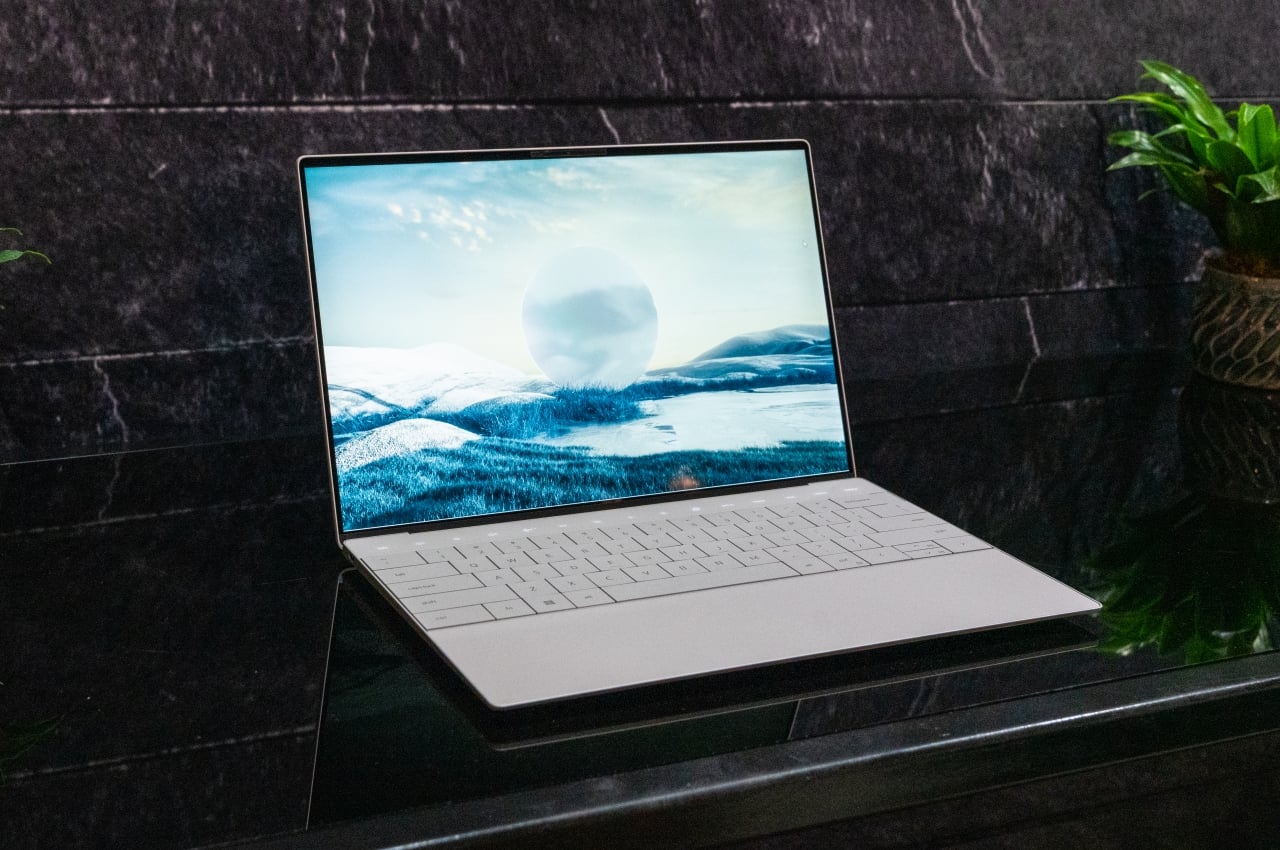
Laptops have become the go-to computing solutions of people, be it for personal use or for work. They have reached a point where they can match desktop computers in all but the most specialized cases, though the ability to expand their power through things like external graphics docks evens out the score as well. Laptop design, in general, has remained the same in the past few decades, at least as far as the placement of components goes. Some have, of course, become thinner and lighter have almost all but banished bezels, but the placement of screens, keys, and trackpads are more or less standard by now (even if keyboard layouts aren’t). Dell, however, is trying to mix things up a bit to make the laptop look more futuristic and less busy, but it raises some important questions about the usability and ergonomics of such a new design.
Designer: Dell
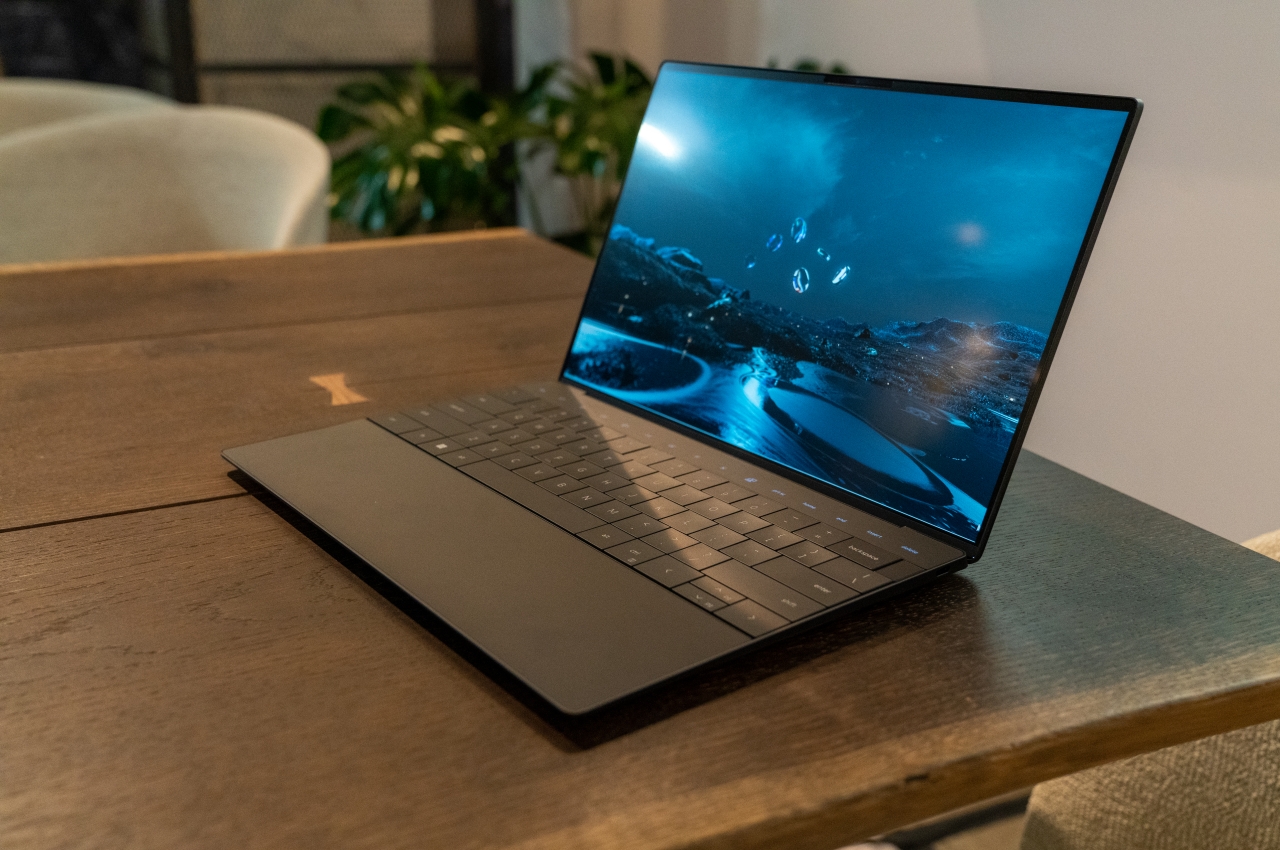
One can argue that laptops have never been the most ergonomic computing devices in the first place. Their overall design was meant to make a computer more portable, going as far as being able to use it on your lap. The strain it puts on your legs and neck, and the angle of your arms and wrist have made laptops have made the earliest laptops the anti-thesis of ergonomics.
Things have improved over the decades, but more thanks to accessories and peripherals rather than the actual design of laptops themselves. The position and angle of the screen, keys, and touchpad still don’t lend themselves well to good posture, and manufacturers haven’t exactly been too keen on changing a working formula. Instead, the likes of Dell, ASUS, and Lenovo have tried to reinvent the laptop with features that drastically change how you use it.
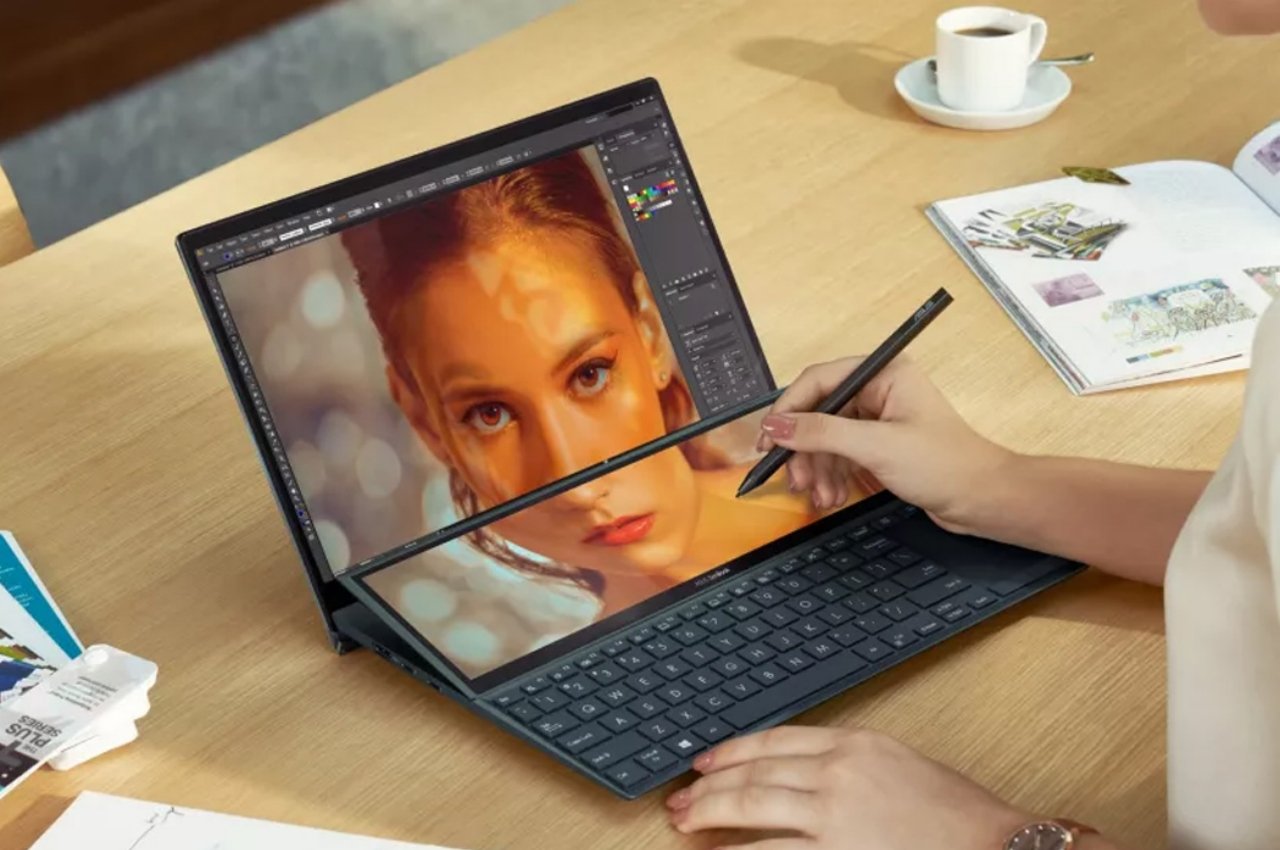
ASUS, for example, has been putting a second screen right above the keyboard, which ends up pushing the keyboard further down. This means that the traditional trackpad is given the boot, though technically, it has been relocated to the right side as a configurable second screen. Lenovo takes that to the extreme by actually putting a tablet-sized display to the right of the keyboard, though the trackpad is still there, now off to the left instead of dead center.
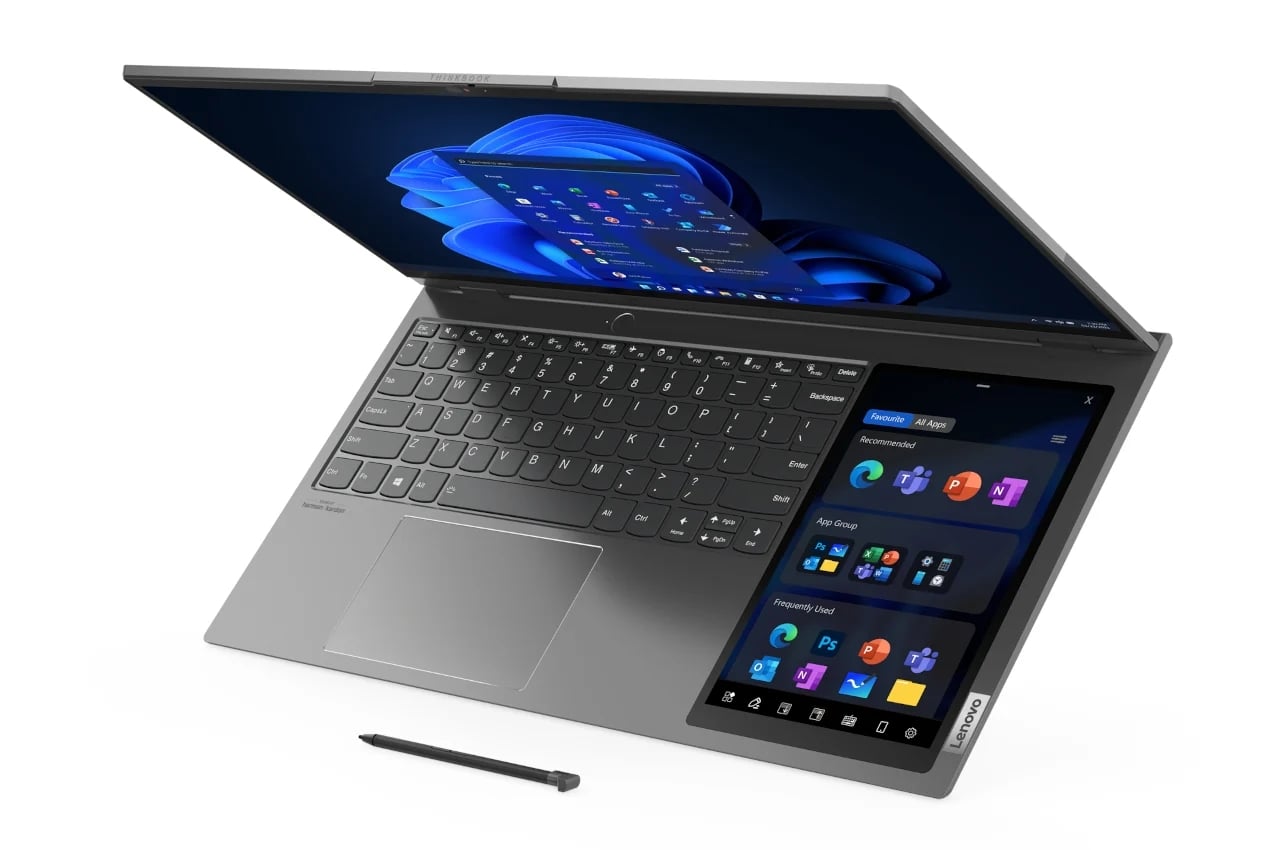
Compared to those two, Dell’s big changes to the laptop design almost look modest, though they carry their own head-scratching moments. In a nutshell, the new Dell XPS 13 Plus embraces minimalism to its fullest, giving the area opposite the display a completely flat look. That means no bumps and almost no gaps save for what’s necessary for the keycaps. Even then, the gaps are minimal, thanks to what Dell calls a “zero-lattice” keyboard.
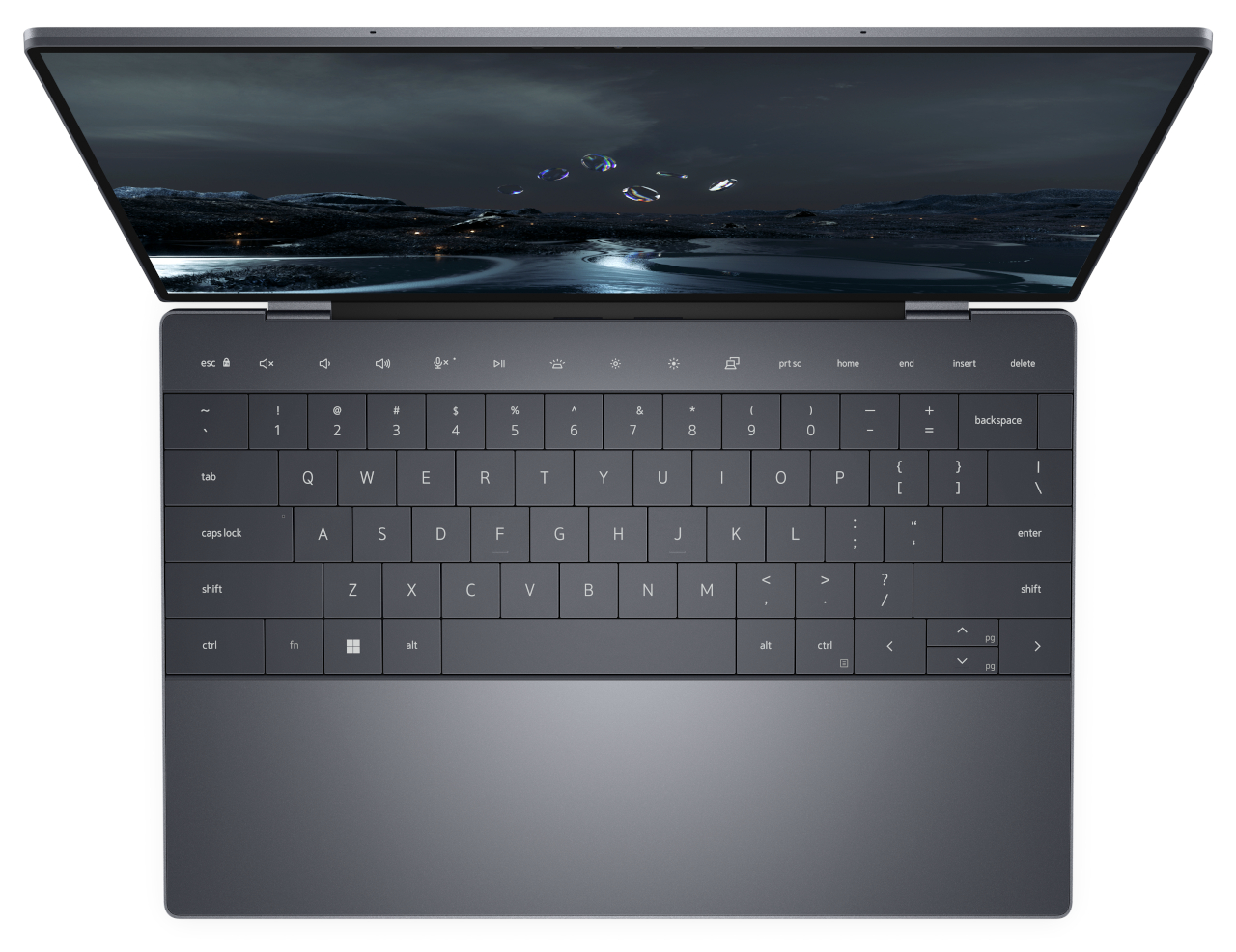
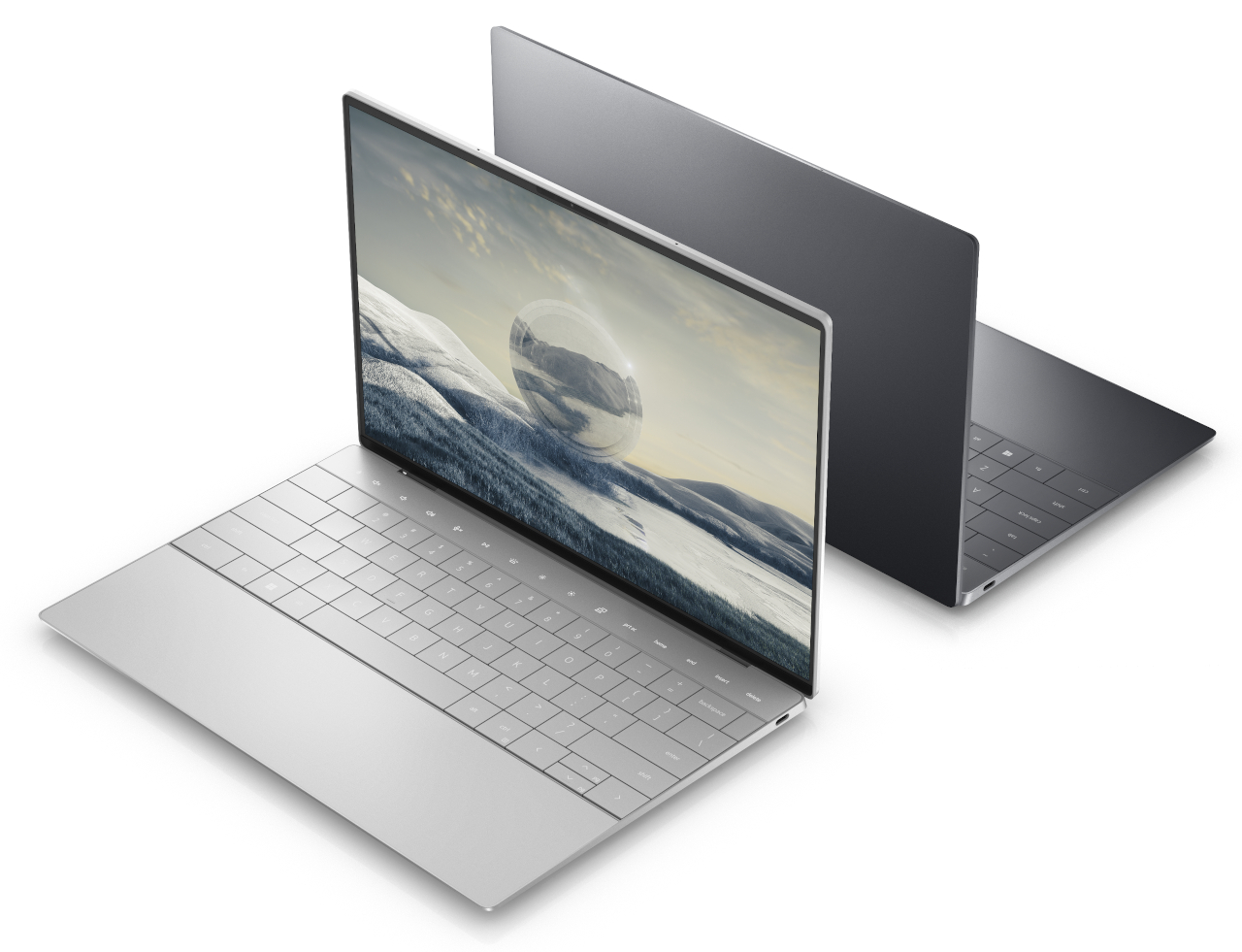
There’s also a touch-sensitive area above the keyboard that serves as the function keys. We’ve seen a similar technology with the MacBook Pro’s Touch Bar, which was equally controversial. The difference is that Dell’s version is clearly minimalist and blends cleanly into the background, without any visual separation between that area and the rest of the laptop.
The biggest change, however, is the invisible trackpad. It’s still there and occupies the same area as a regular trackpad, perhaps even bigger, but there’s no clear way for you to actually see where it is. You’re given haptic feedback, so you’re not completely clueless, but it remains to be seen (or felt) how effective that will be in practice.
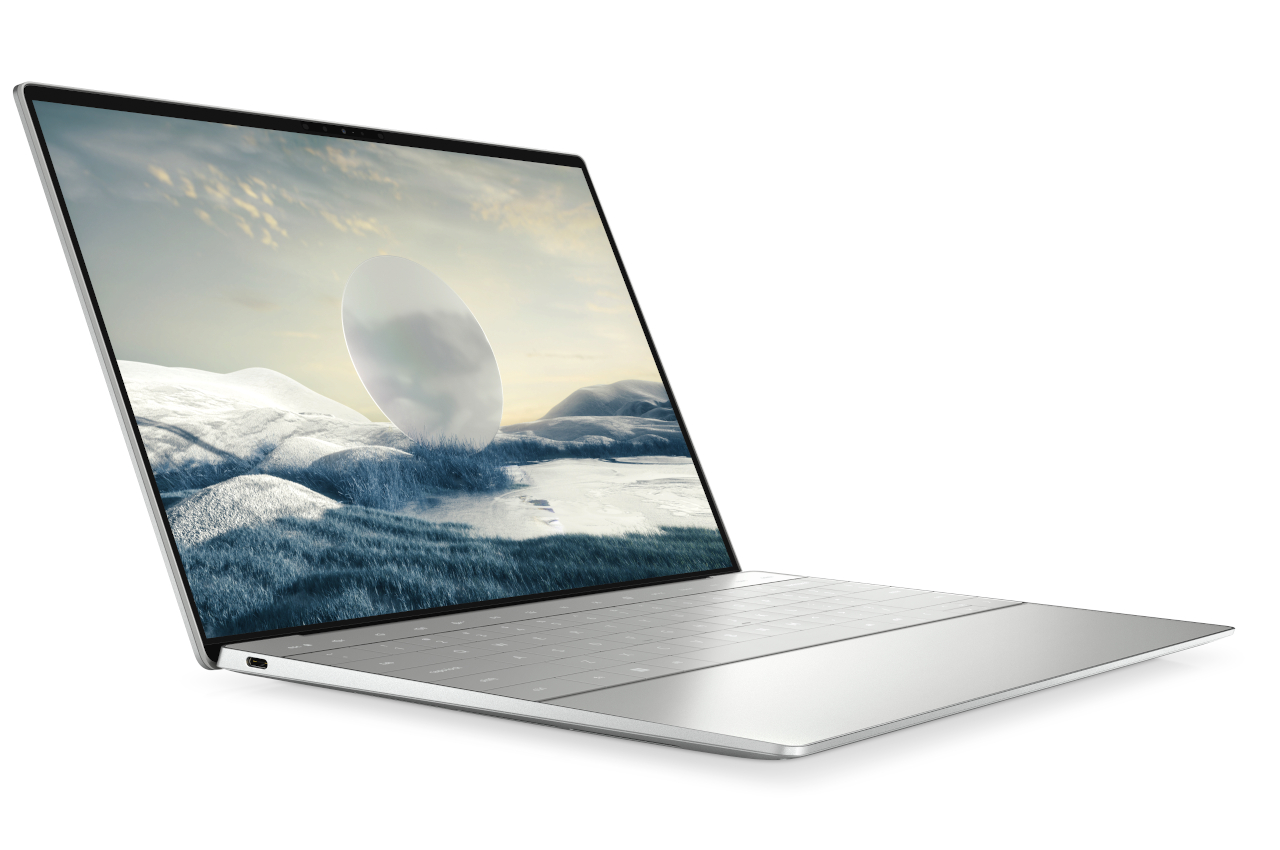
Dell definitely accomplished what it set out to do with the Dell XPS 13 Plus. The laptop is truly beautiful and clean; a minimalist dream’s come true. As an added bonus, the PC maker took steps to reduce the carbon footprint of the laptop, both during its production as well as its packaging. It definitely checks most of the boxes of product design and sustainability. It does, however, leave some questions hanging when it comes to other aspects that would affect how people use the product.
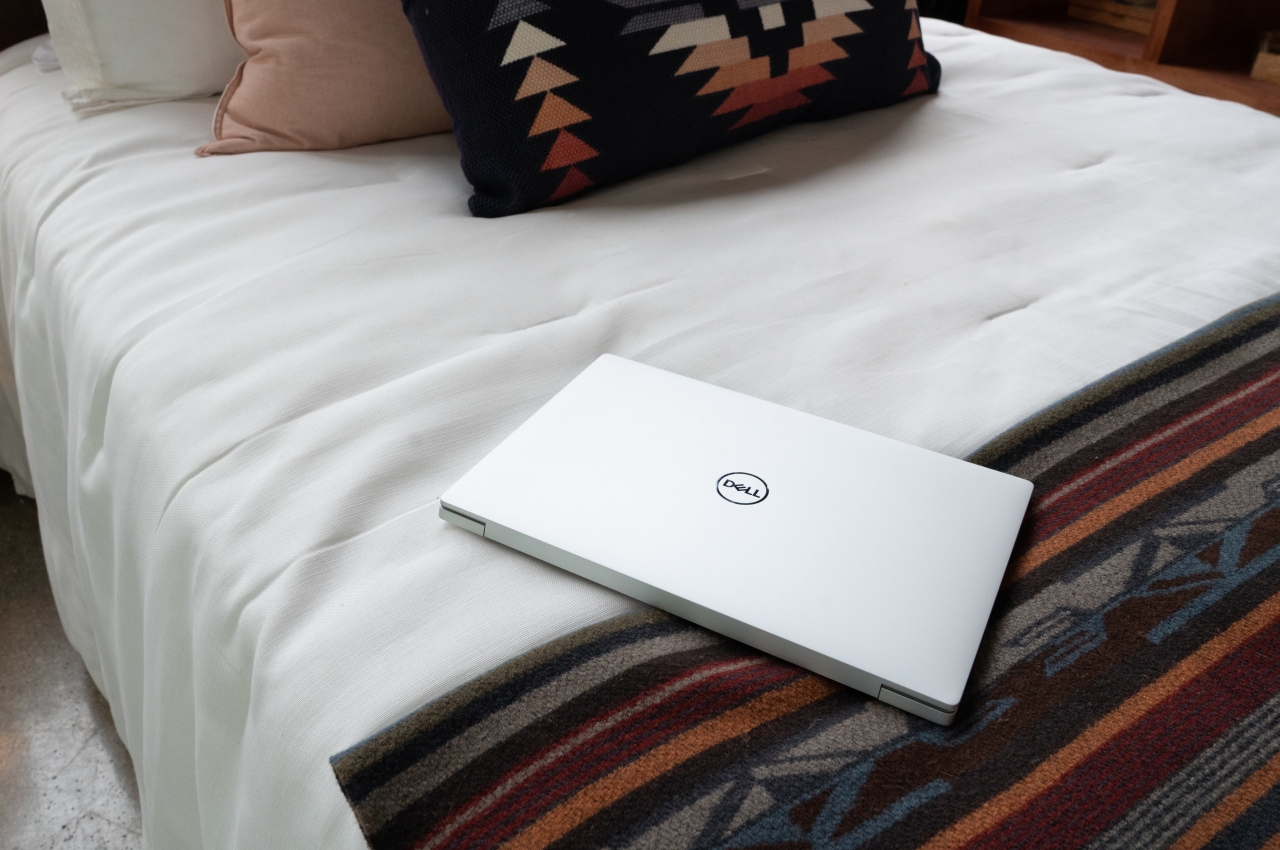
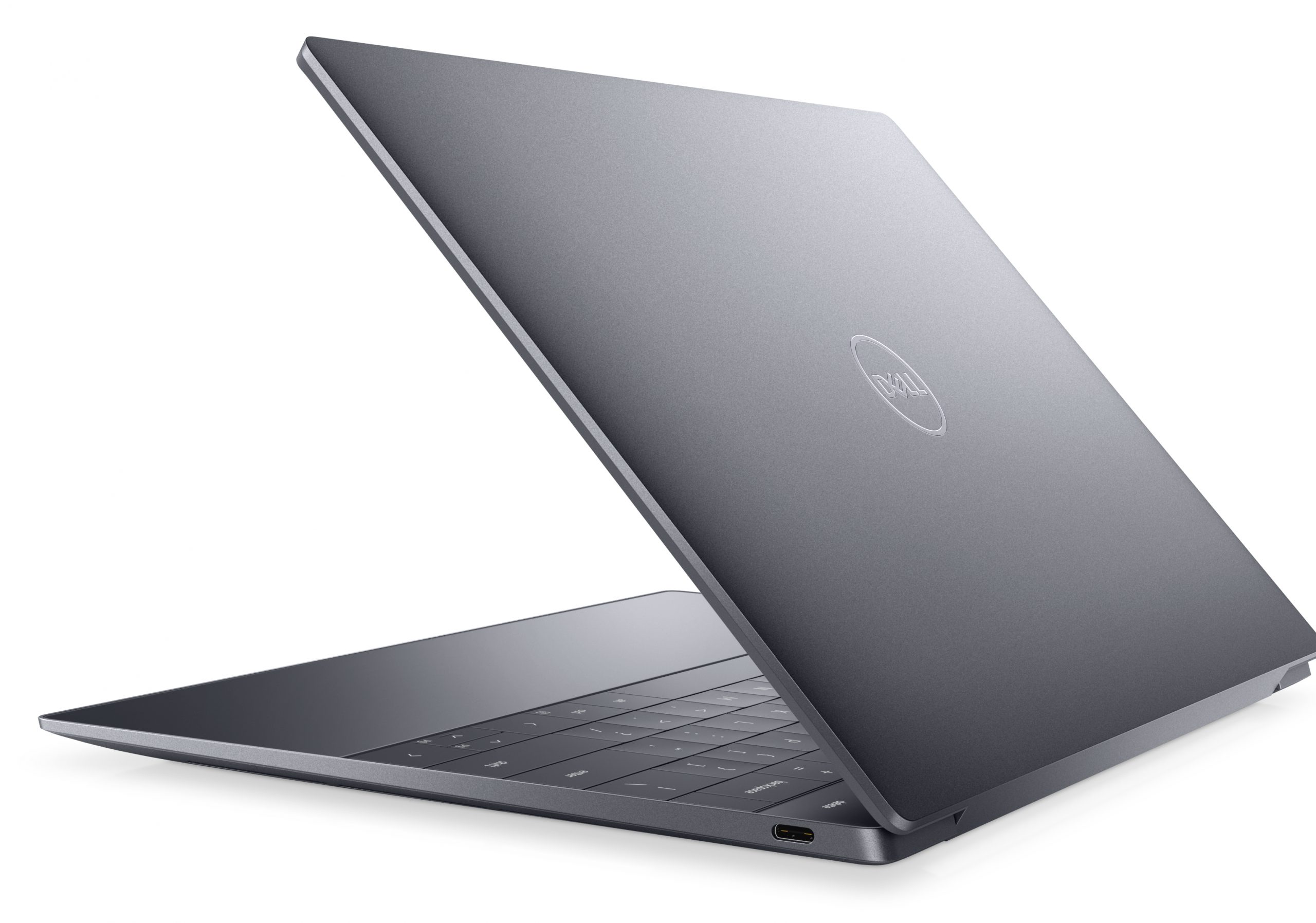
The MacBook Pro Touch Bar wasn’t exactly that popular, and the XPS 13 Plus’ version actually misses out on some of the flexibility and benefits of a screen-based solution in favor of a minimalist design. The lack of physical keys could make it harder to hit them by muscle memory, so you’ll always end up looking down. The same could almost be said of the zero-lattice keys, whose larger sizes could be negated by the very same thing that makes them special. Our fingers almost instinctively know the keys to hit, partly because of how they feel with those bumps and gaps in between keys.
The biggest question mark, however, is the invisible trackpad. It might take a lot of trial and error for people to get used to where the active area is or how far it extends. There is no argument that it definitely looks elegant in its cleanliness, and we give Dell the benefit of the doubt that it did due diligence in R&D, but we’ll have to wait and see for real-world feedback on whether this beautiful but unusual $1,299 laptop is worth those changes.
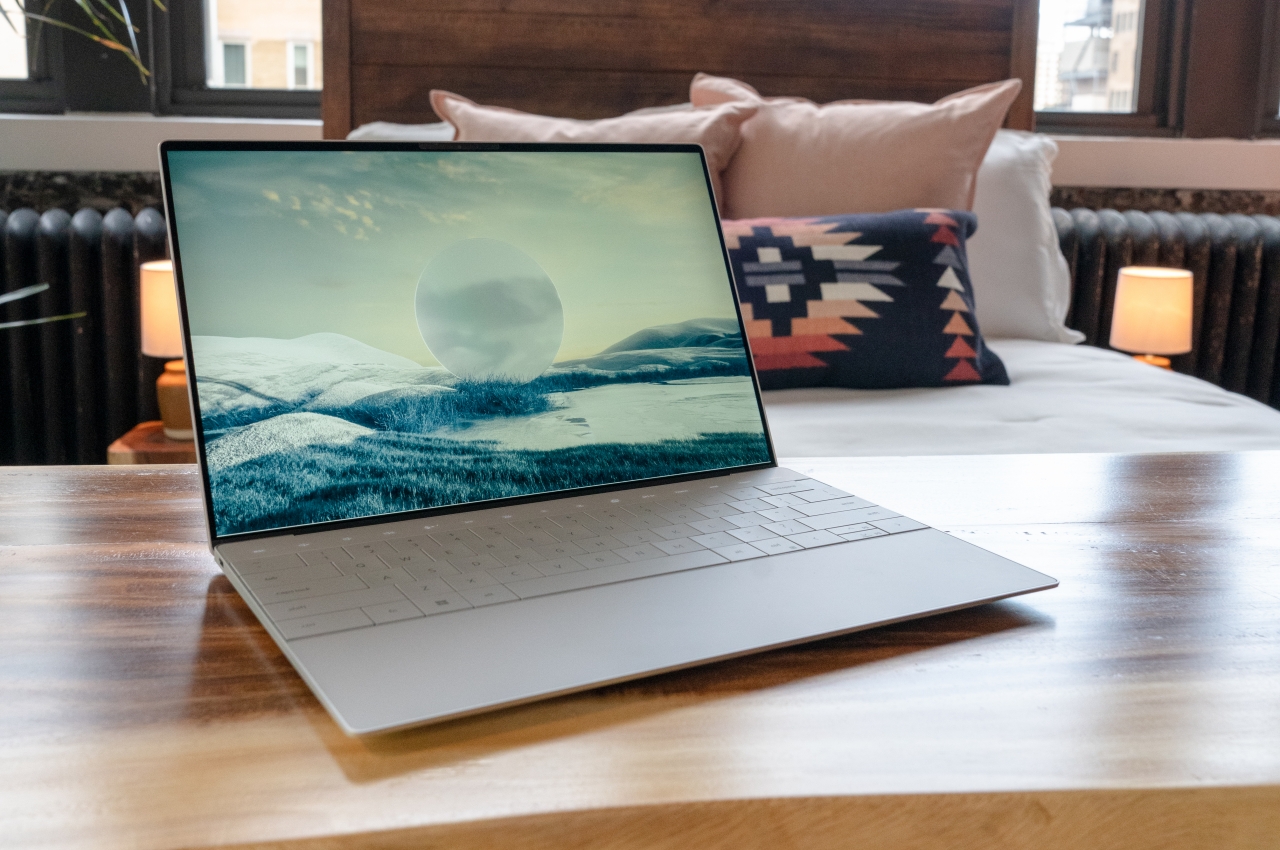
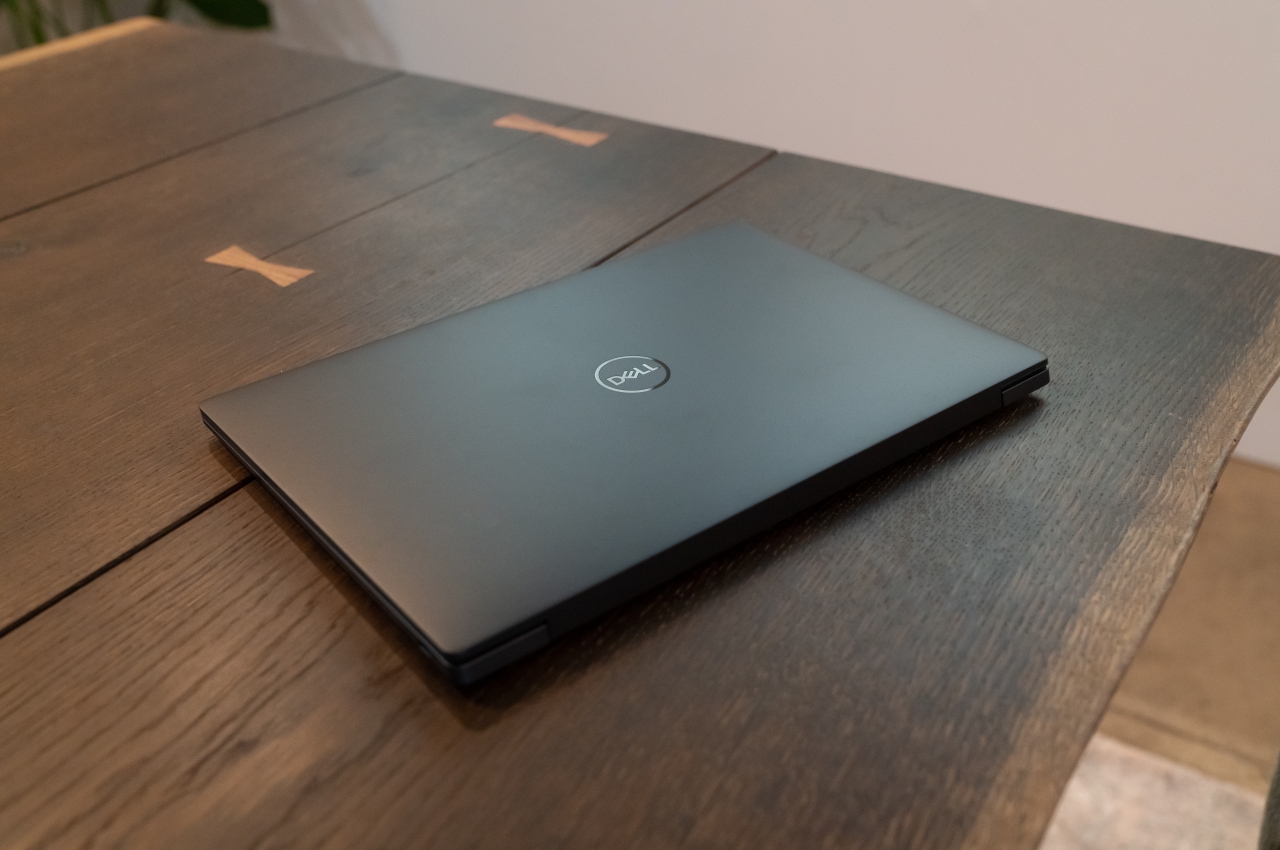
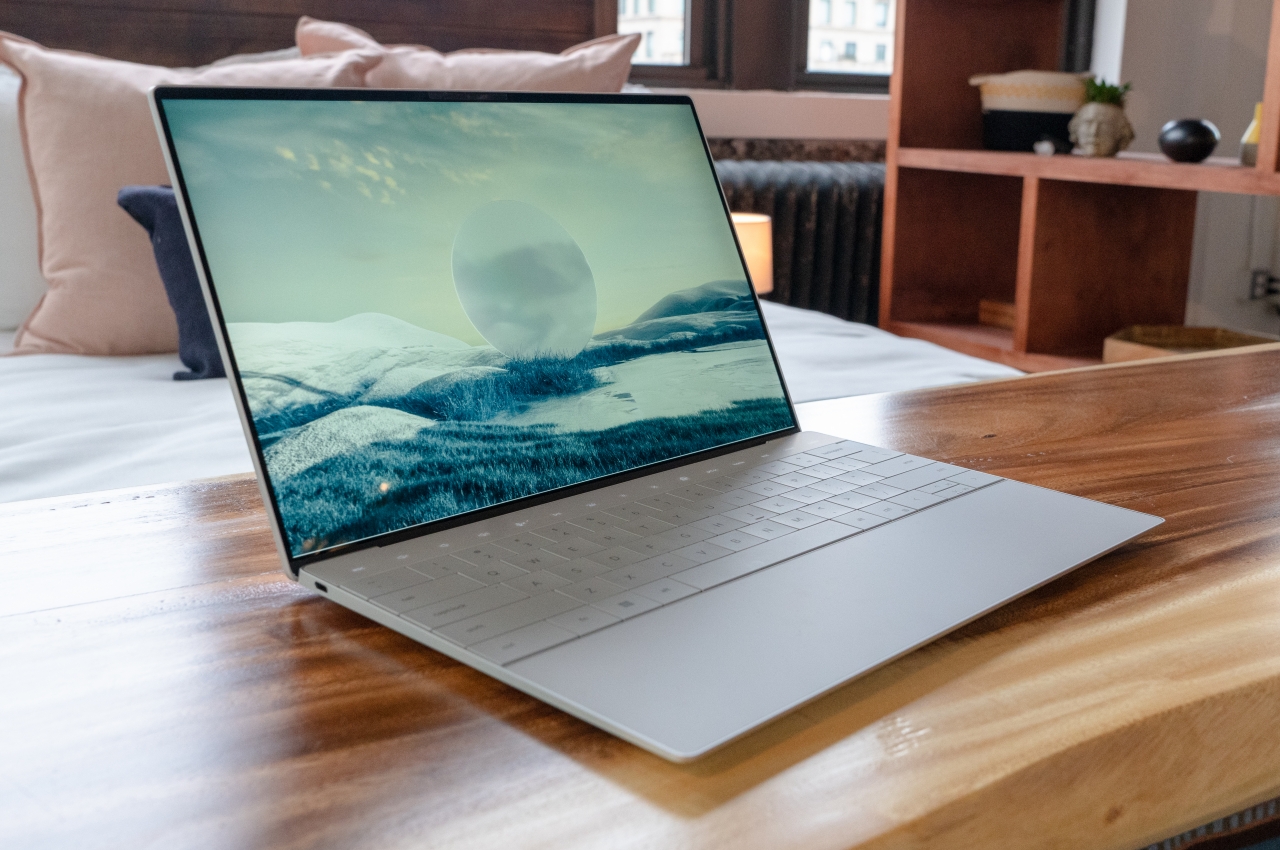
The post Dell XPS 13 Plus tries to evolve the laptop with questionable features first appeared on Yanko Design.
We love tech of all shapes and sizes around here, but over the past decade it’s become increasingly obvious that our gadget fervor comes at a cost —especially when it comes to the environment. Metal and plastic don’t fully decompose over time, and almost everything we buy now has rare earth elements in it. But all is not lost as companies and consumers alike have become more cognizant of the problem, and offer possible solutions.
On your end, this means disposing of your old products responsibly, allowing companies and governments to reuse some components and dispose of others in a safe manner. That means taking the things you can’t give away or sell to a recycling center or, at the least, to a store that can pass it along for recycling. Check out our advice below on how to find a place that’ll take your old phones, computers and other broken or outdated gadgets.

There is no national electronics recycling law at this time, so you won't find any federal programs to assist you with getting rid of old devices. The USPS does run a program for federal agencies and their employees, but it's not available to the general public. Instead, the rest of us have to rely on nationwide retailers to toss out our old stuff.
With more than 1,000 locations in the United States, Best Buy may also be local to you, in which case, you can go to a location to drop off items to be recycled. You just need to take it to the customer service counter. They'll issue you a receipt too, but keep in mind that you can't claim the drop-off as a deduction on your taxes because Best Buy isn't a charity.
As of 2023, Best Buy also has a mail-in option. You can purchase a small- ($23, up to 6 pounds) or medium-sized ($30, up to 15 pounds) box from the retailer, fill it up with as many approved gadgets as you can (while staying under the weight limit) and ship it back to Best Buy to be recycled. You can either drop off your boxes at a UPS drop-off point or schedule a UPS pickup (do not drop the boxes off at a Best Buy store).
You can even recycle televisions and monitors, though in most places you'll be charged a fee of $30 per item to cover the higher costs of transporting and disassembling them. Best Buy’s in-house TV brands of Insignia and Dynex will always be accepted for free, though, as long as they’re smaller than 49 inches. (Consumers in California are not charged the $30 fee, while locations in Pennsylvania charge the fee but in return offer a $30 gift card as reimbursement. Connecticut locations will only accept Insignia and Dynex sets for recycling.) If you're turning in any desktops, laptops or PC gaming accessories, you’ll get a voucher for 20 percent off toward the purchase of a new Logitech mouse, keyboard, webcam or headset. Just be aware that Best Buy limits you to three items per household per day, including up to two televisions.
Recycling your stuff at Staples is similar to Best Buy — just bring your products to the checkout counter and an associate will help you out. But you can only bring in seven items a day, and the store won’t accept televisions at all (monitors are allowed). Staples Easy Rewards members also receive points for bringing in goods to be recycled or shredded; the points can be redeemed at checkout for discounts on purchases (200 points = $1 off).
If you can’t make it to a store, Staples also offers a mail-in program. You’ll need to purchase a recycling box first, which start at $20 for a small box and go up to several hundred for a full pallet (only available for commercial locations). You can put as much as you want into a box as long as it fits inside and doesn’t exceed the weight limit (a large box can accept up to 70 pounds). A “serialized” option is also available for an additional charge, which includes an inventory list for everything you send back. The boxes are shipped to you and then back to Staples at no extra cost;, just drop off the sealed packages at your local UPS drop-off point or call for a pickup.
Office Depot has more than 1,300 locations, but unlike Staples and Best Buy, it won't recycle your old gadgets for free. If you're only getting rid of a few phones or batteries, those can be turned in at any store for no charge. For everything else, you must purchase a Tech Recycling Box ($8.39 for small, $18.29 for medium, and $28 for large) even if you’re already at the store. Once you have the box, you can fill it with as many items as you can fit inside, including smaller televisions, as long as it doesn’t exceed the weight limit. So it's a great deal if you have a lot of stuff you want to dispose of. These must be turned in at an Office Depot store; an associate will check to make sure all the items are acceptable and prepare the box for shipping (you’ll be asked to fill out a form).
You can also return used ink and toner cartridges and get $2 each, up to 10 a month, if you’re a rewards member and spend at least $10 in-store on products within the same month.
You can dispose of old rechargeable batteries, old phones and CFL bulbs in the dropoff boxes at any of 2,300 Home Depot or 2,200 Lowe’s locations. The bins are usually located in the front of the store, and Home Depot has an 11-pound limit on individual items.
Target locations have drop-off bins for recyclables located near the entrance; in addition to bins for paper and plastics, there is a specially-designated bin for e-waste like cellphones and used ink cartridges.

If you can't make it to a retail location, especially when you need to get rid of only one or two items, many companies offer recycling programs for their own products. They'll even pay for shipping. Some run their own programs while others use outside organizations. We've outlined policies from a handful of manufacturers below.
Amazon would love for you to use its trade-in program and, if you’re looking to recycle Amazon-branded products like Kindles, Fire TVs and even Ring doorbells, you absolutely should. Amazon will send you a gift card as well as promotional discount to use on a future Amazon device purchase, even if the returned product is non-functional.
For products from other manufacturers that can’t be resold, Amazon offers mail-in recycling. You can send in your busted phones and tablets, as well as select peripherals like keyboards and mice. You'll just need to fill out some forms online and generate a shipping label, which you can slap on any box. Drop it off at a UPS location, and you're good to go; Amazon will cover all the costs.
If your iPhone or MacBook is still in good shape, you should consider selling it, but if it's too old or beat up you can still score a gift card by turning it into Apple's recycling program. For iPhones (as well as select handsets from Samsung and Google) and iPads, you'll be asked to fill out a form attesting to the product's condition and given a trade-in quote (at the time of writing this, a working iPhone 8 goes for $50 and an iPhone 12 scores you $220). For Macs and Apple Watches, you'll be asked to provide a serial number as well. Though Apple won't give you cash for anything it deems too old, broken or otherwise unacceptable, you can still mail it in or bring it to any Apple Store so it can be responsibly disposed of.
Dell offers drop-off recycling via a partnership with Goodwill. Not every location participates, but there are more than 2,000 that do. And, because it's a charity, you may even be able to deduct it as a donation on your taxes. Dell also has a mail-back program on its site where you can generate and print out a shipping label and drop the package off at a FedEx location instead.
You can ship old products back to Epson by simply creating a shipping label on its site and dropping it off at a FedEx location. If you’re located in New York, you can even get free packaging sent to you by calling 866-922-8252. Epson also recommends getting in touch with a local charity via Digitunity, where your old equipment may be refurbished for use by people in need.
If you can, HP recommends taking its products to the nearest Best Buy. HP does have a trade-in program, but it’s geared toward business customers looking to upgrade equipment that still has market value and individual consumers will be redirected to other recycling methods.
Ink and toner cartridges can be returned by mail; the company will mail you an envelope that can hold between 3 and 8 ink cartridges and can be dropped off in a mailbox or at the post office. For toner and large quantities of ink cartridges, you can print out a label and use your own box, or request a box be sent directly to you, which you’ll fill with items and drop off at a UPS location.
Many other companies use outside recyclers to dispose of their products, and you'll often see the same names popping up again and again across different manufacturers. This should simplify things in some cases — you should be able to send in products from multiple sources in one package. You just need to fill in the make and model to generate a prepaid shipping label. However, different states have different rules on what you can return, so the drop-downs for selecting your product may vary by area.
Two major recycling companies you'll notice a lot are RLG, which covers Acer, Canon, Google, Intel, Lenovo, and Microsoft, and MRM, which recycles products for Brother, Hisense, Hitachi, HTC, Logitech, Panasonic, TCL and Wacom.

There may not be a national law dictating that you must recycle your electronics, but at least 26 states have passed rules that vary widely on what they demand of manufacturers and consumers. Almost all states that do collect products for recycling provide this service free, with the bill footed by the companies in some way. Most provide some local programs to help you get rid of your stuff, regardless of whether recycling your gadgets is required or optional.
States where you can no longer dispose of electronics in the regular trash and must recycle them include: California, Connecticut, Illinois, Indiana, Maine, Minnesota, New Jersey, New York, North Carolina, Oregon, Pennsylvania, Rhode Island, South Carolina, Vermont, West Virginia, Wisconsin and the District of Columbia.
The following states have laws requiring manufacturers to pay for recycling, but you, the consumer, are not actually required to recycle your electronics: Hawaii, Maryland, Michigan, Missouri, Oklahoma, Texas, Utah, Virginia, and Washington.
The following states have some special circumstances worth noting:
Does not allow recycling centers to charge you a fee for turning in electronics, so many organizations and retailers that would usually charge for recycling televisions and monitors do not accept them. Because you cannot dispose of them curbside, you can take them to a municipal transfer station for free.
New York State has a law making it illegal to charge a fee at recycling centers, so this is your best bet for disposing of old televisions (retailers can still charge for the service). If you live in a New York City apartment building with 10 or more units, contact your landlord about getting an ecycleNYC drop-off box installed in your building. It’s super convenient and free.
Does not allow retailers to charge you a fee to recycle, so places like Best Buy and Staples will not accept most televisions or monitors. Many recycling centers have also closed as a result of underfunding, so check the list of open locations first. Some nonprofit recyclers may still accept the items, and you should check to see if your local government is hosting any drop-off events. Lancaster and Dauphin Counties also still run civic recycling programs.
This state does not have a dedicated statewide recycling program, but some localities run their own programs including Fairfax, Loudoun and Rockbridge counties, and cities like Arlington. Check each municipality’s site for details.

Cell phones are the easiest gadget to recycle — if you haven't already decided to sell yours off on eBay or via sites like Decluttr and ecoATM. But, if you can't or won't make some cash off of it, you can send it to:
Call2Recycle, which has drop-off centers all over the country in many chain stores, including Lowes and Home Depot. It will also accept rechargeable batteries.
Cell Phones for Soldiers accepts phones in any condition and sells them to refurbishers or recyclers. The proceeds go toward purchasing phone cards for troops so they can call their friends and family back home. To be clear, the phones are not given directly to the soldiers.
The three major US carriers — Verizon, AT&T, and T-Mobile — all offer free recycling. You can trade in your old device in-store or send it in for a credit toward a new phone, or let them straight up recycle it. AT&T also participates in Cell Phones for Soldiers.
If you do decide to try your luck with ecoATM to see if your old phone is still worth a few bucks and it turns out it's worth nothing, you can at least rest easy knowing that the company will also recycle your phone responsibly.
This article originally appeared on Engadget at https://www.engadget.com/where-to-recycle-electronics.html?src=rssDell is checking all the right boxes for a laptop that is not only environment-friendly but also potentially immortal.
Laptops revolutionized the computing industry by making personal computing more portable, but it also came at the expense of some flexibility and sustainability. Unlike towering desktops, not everything inside a laptop can be easily upgraded, much less replaced when broken. Many laptops makers probably prefer that status quo, but Dell is boldly pushing an idea that could mean it will eventually sell fewer laptops.
Designer: Dell
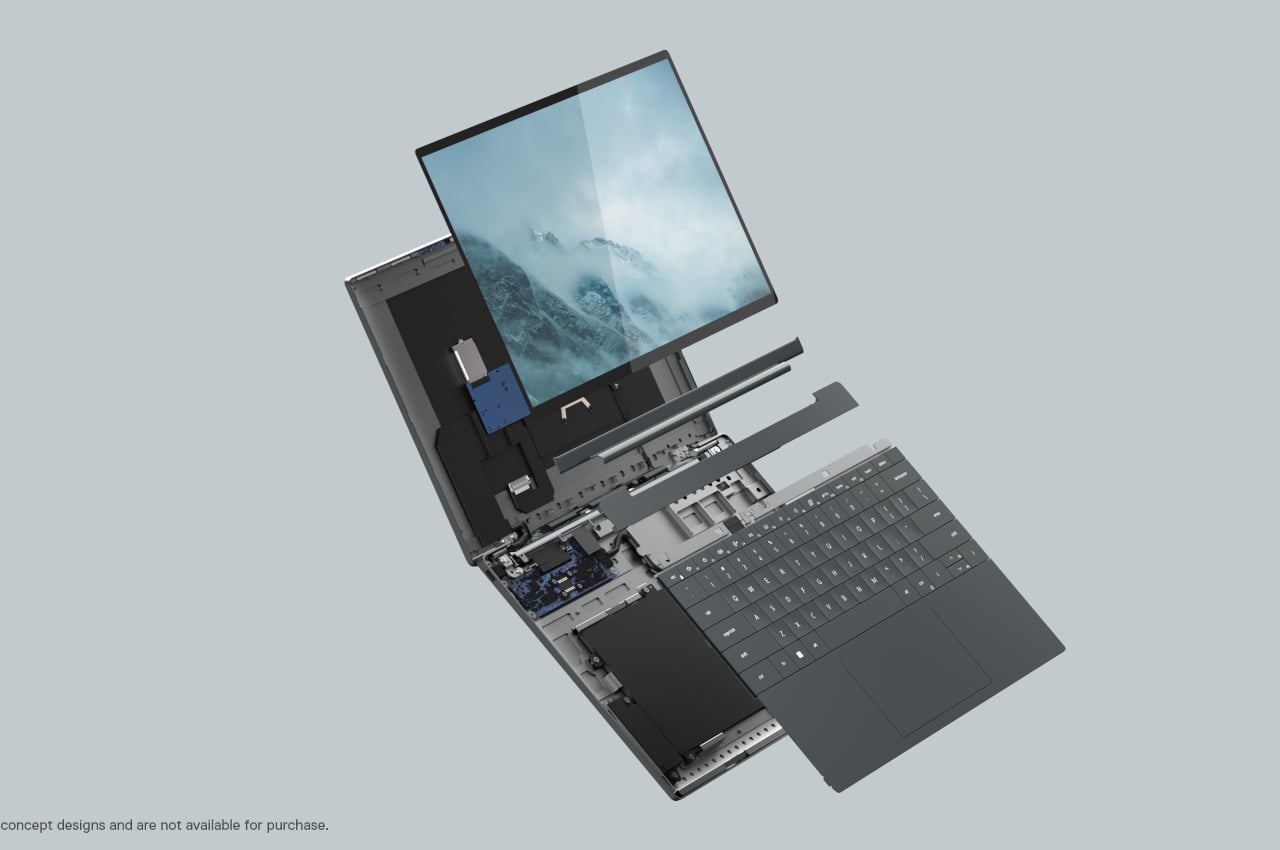
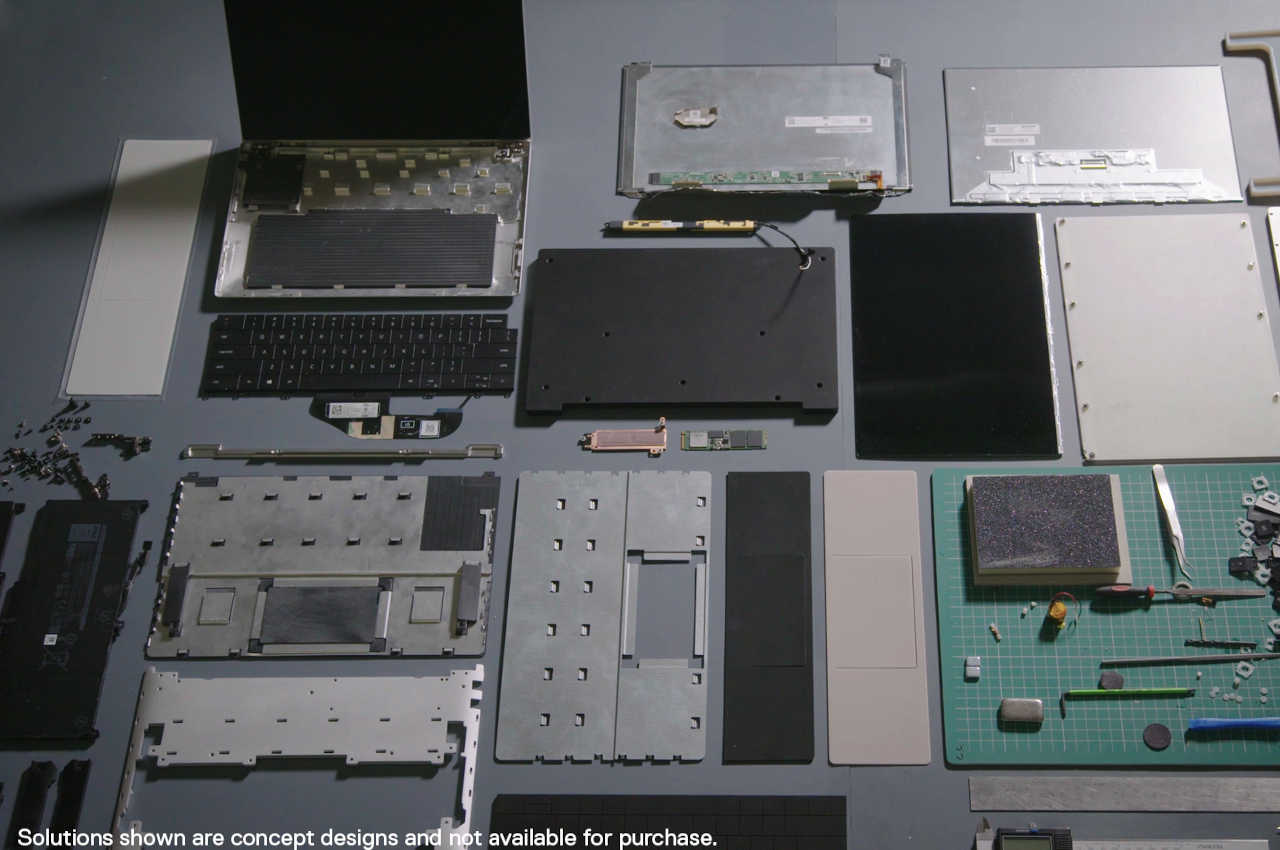
Today, you can upgrade or replace a laptop’s memory and storage, but that’s pretty much it. You can’t upgrade the processor, add a graphics unit, or even easily replace the keyboard after years of wear and tear. That’s not even considering the materials and processes used in manufacturing these devices, which involve a lot of plastics and a lot of components that eventually end up being a lot of waste.
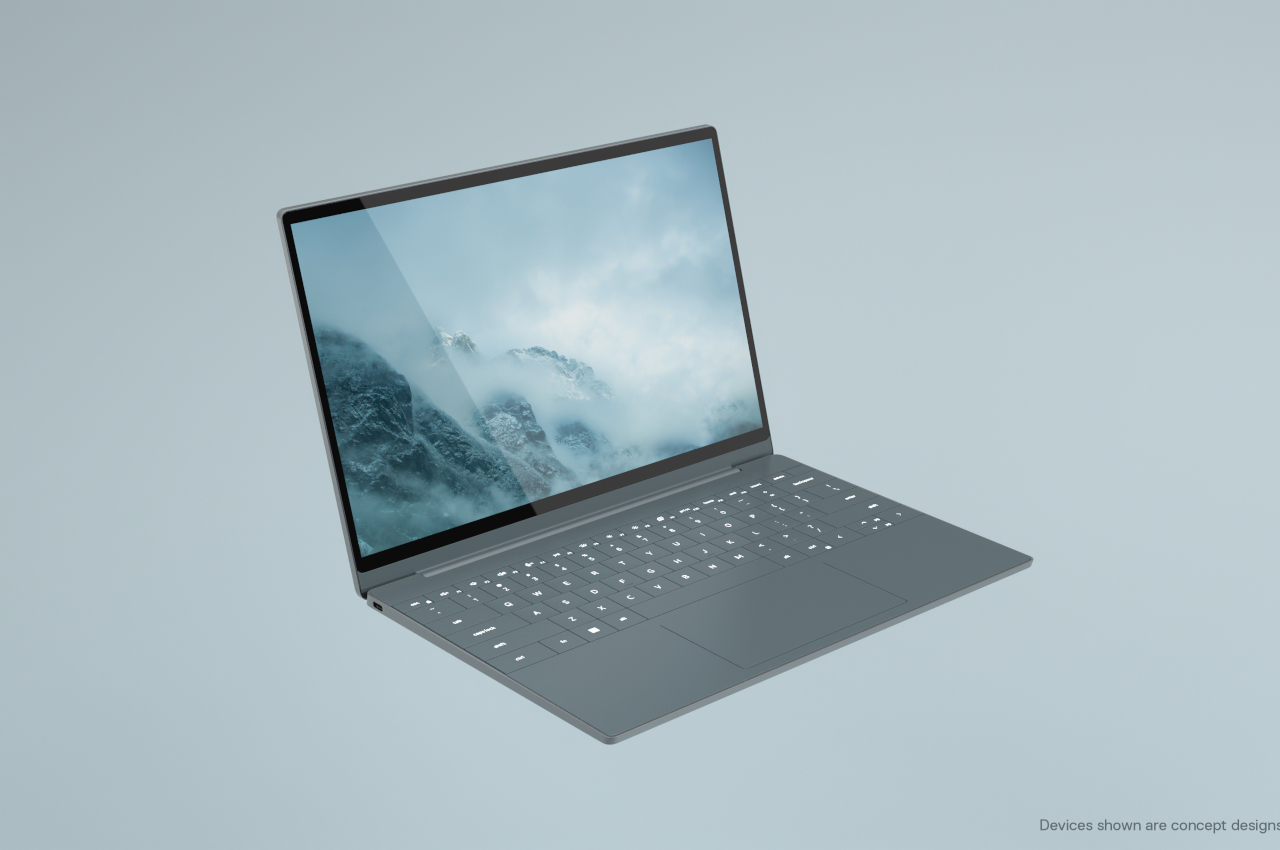
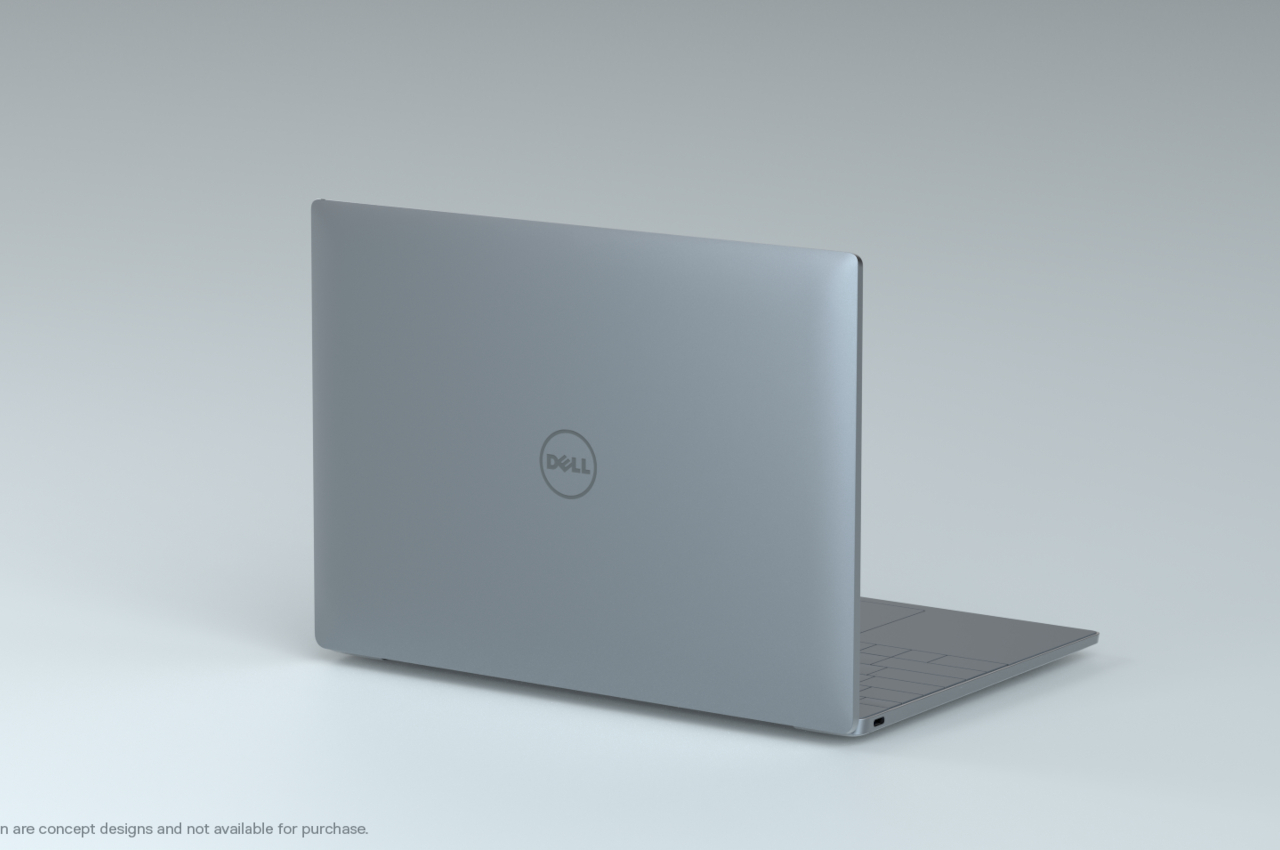
Dell’s Concept Luna laptop throws all of that out the window, envisioning a portable computer that would appeal to almost everyone, from the expert PC modder to the environment-conscious consumer. The company is trying to apply multiple strategies across the pipeline to not only reduce the laptop’s carbon footprint but, ultimately, also make it as long-lasting as any desktop that can get repaired or upgraded bit by bit.
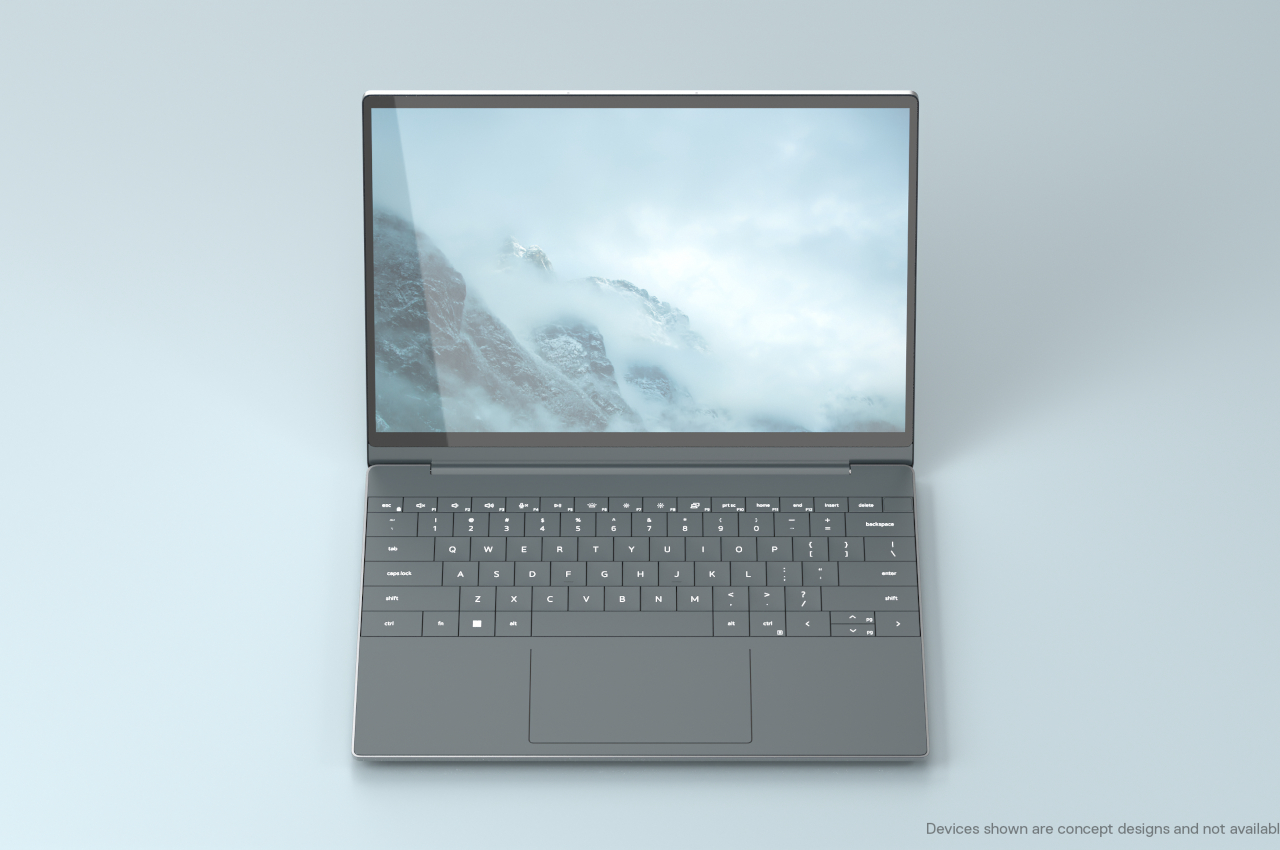
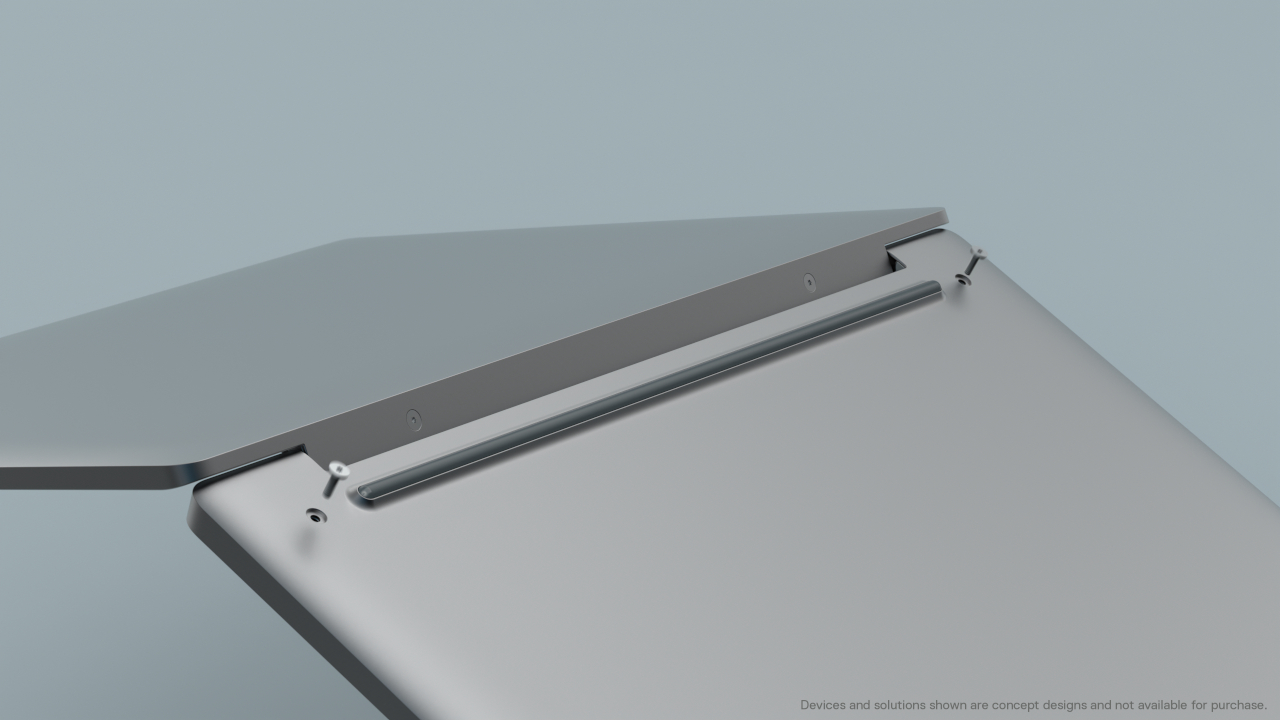
The ideas that Dell has are quite interesting. In addition to using more recyclable materials, like flax fiber instead of plastic laminate, the company is also looking into shrinking the size or number of components like the motherboard to reduce the amount of energy used to manufacture them. Smarter placement of those components can also lead to better passive heat dissipation, removing the need for plastic fans inside.
Then there’s also the element of repairability, which is made easier by having only four screws to access internal components and using no adhesives. Components can be removed easily and replaced, or perhaps even upgraded with a newer part. All in all, the Concept Luna represents the holy grail of sustainable computers and is probably years away from becoming a reality.
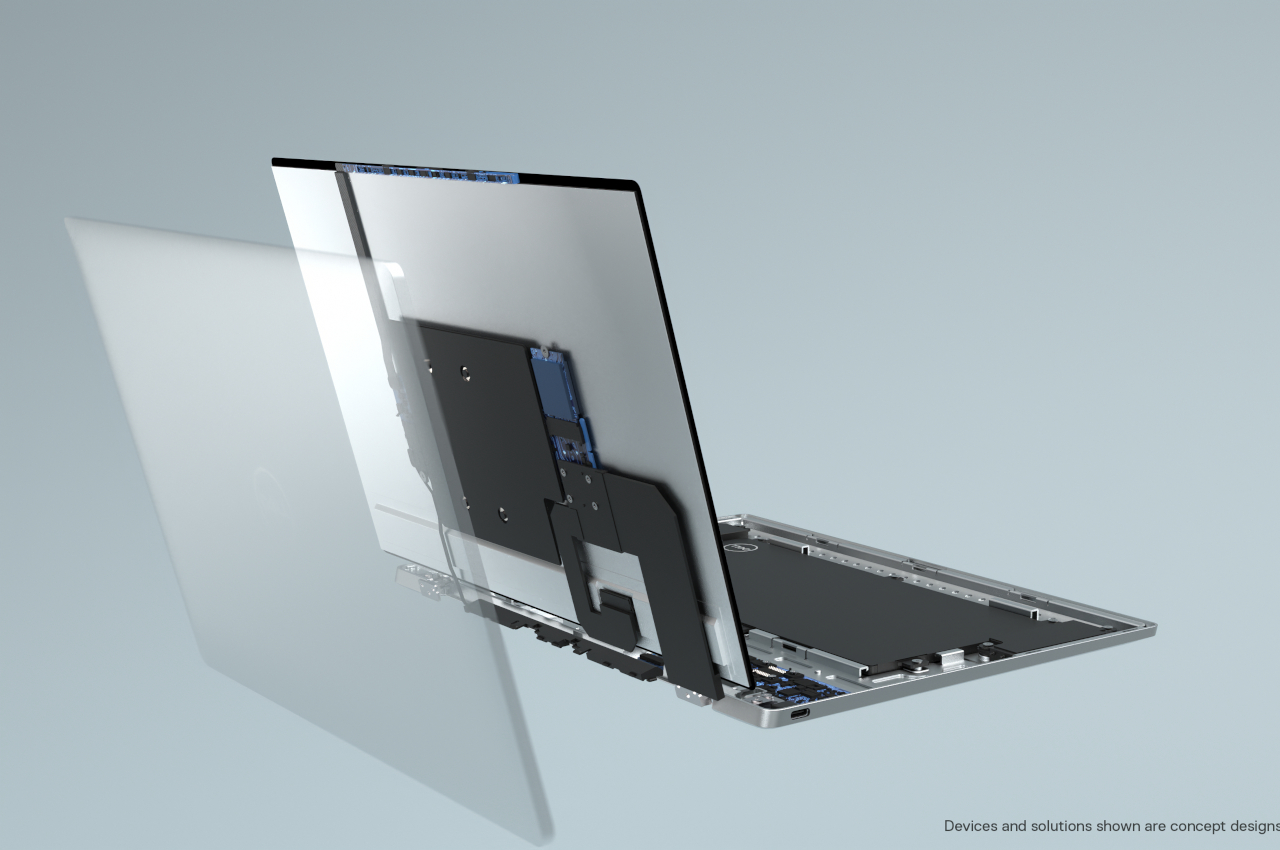
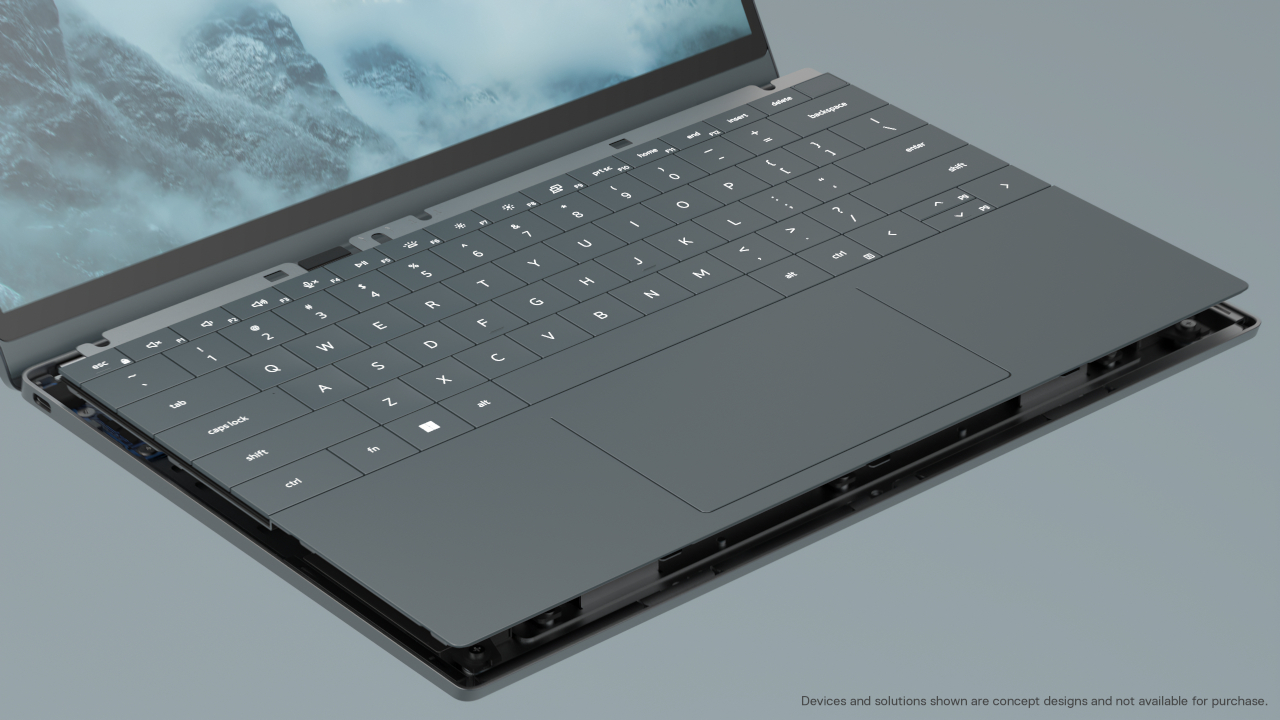
Dell admits that the concept only touches on what is possible, not what is feasible or, more importantly, profitable. A sustainable laptop would ultimately mean people will buy fewer new laptops if they could just upgrade or replace parts of the laptop they already own. Of course, Dell could build a business around selling parts or services, but that might still be less profitable than the status quo that isn’t doing our environment any favors.
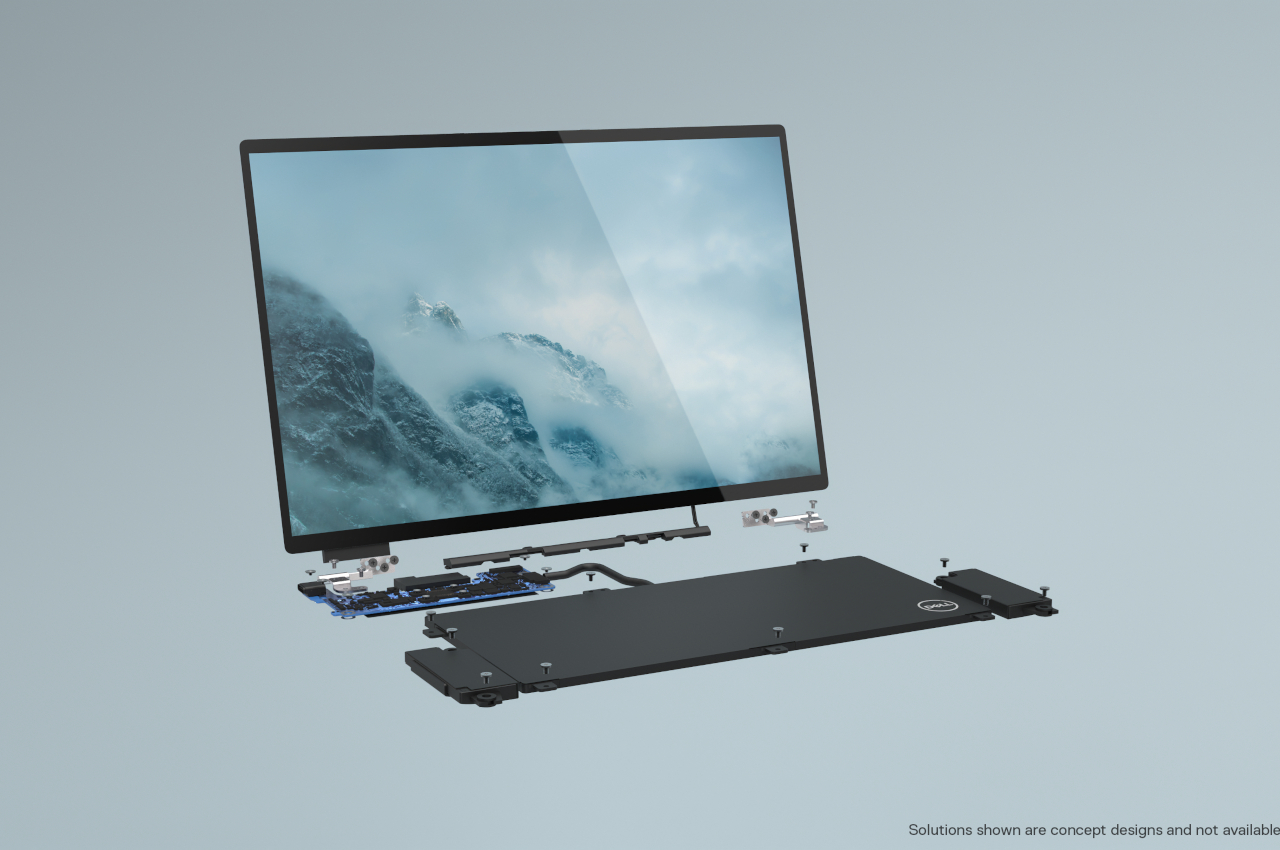
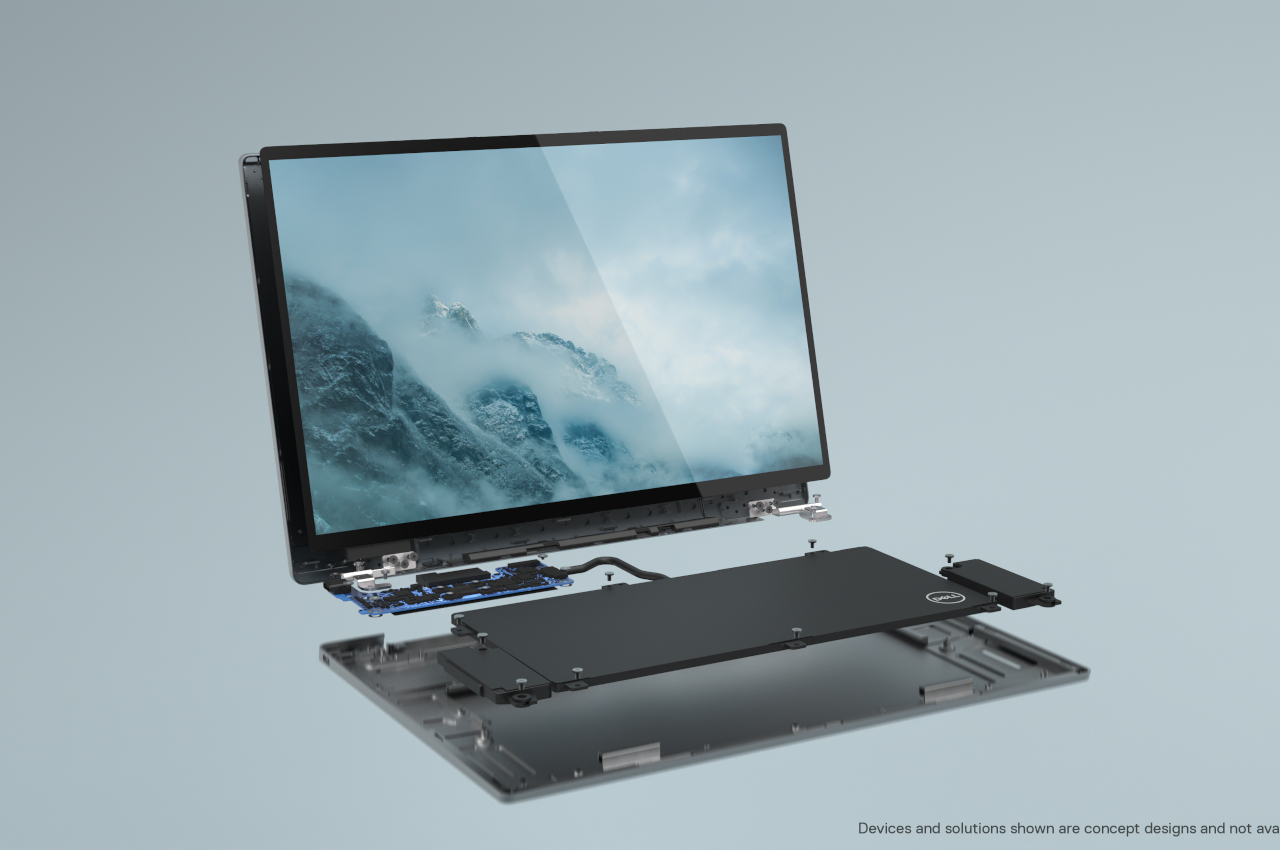
The post Dell envisions a sustainable laptop, allowing you to replace parts, creating a design you could grow old with first appeared on Yanko Design.